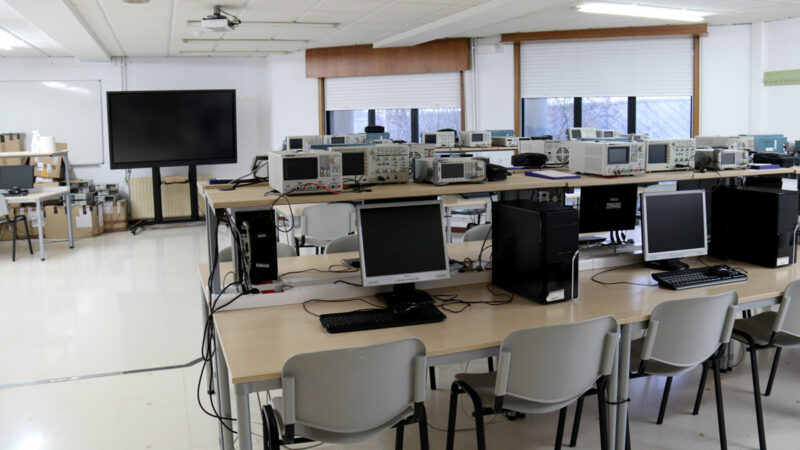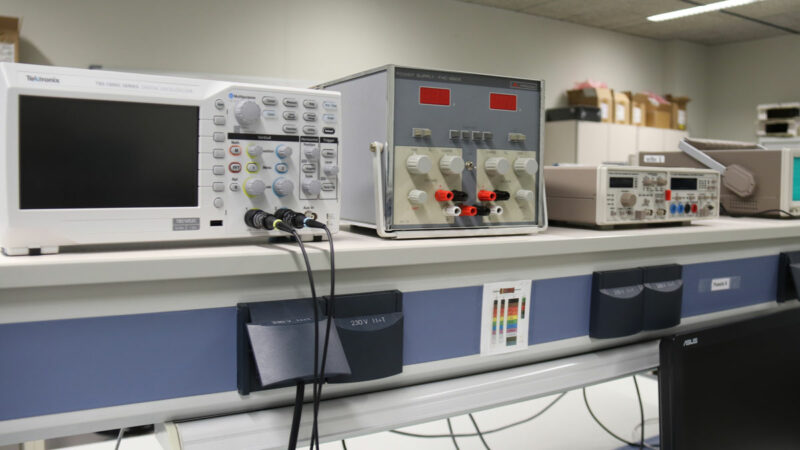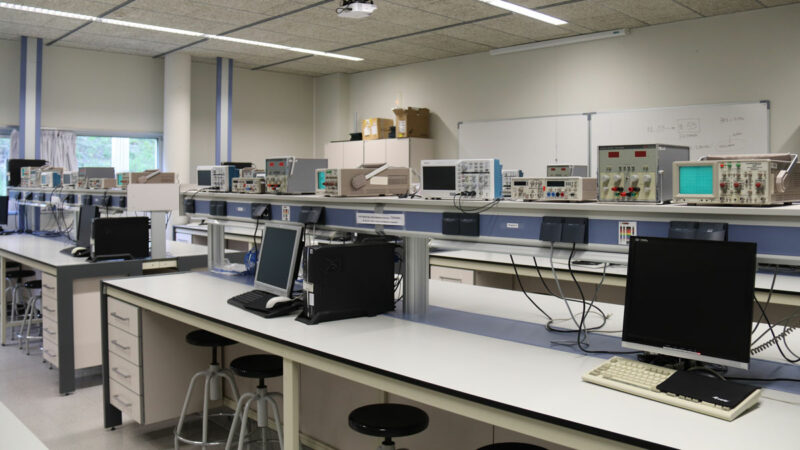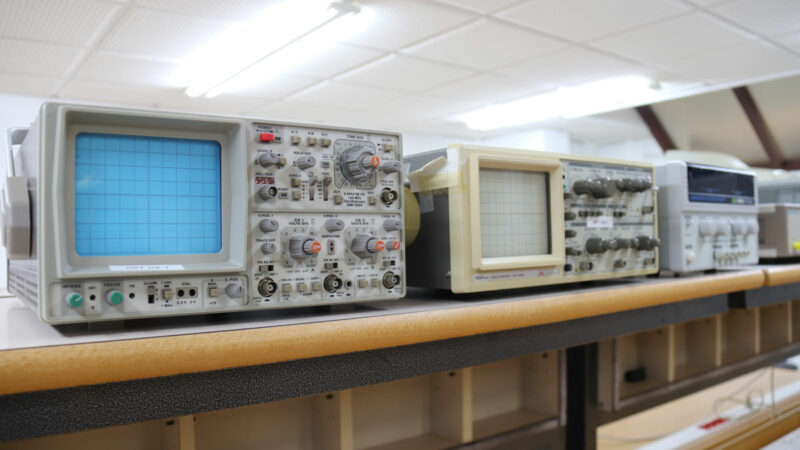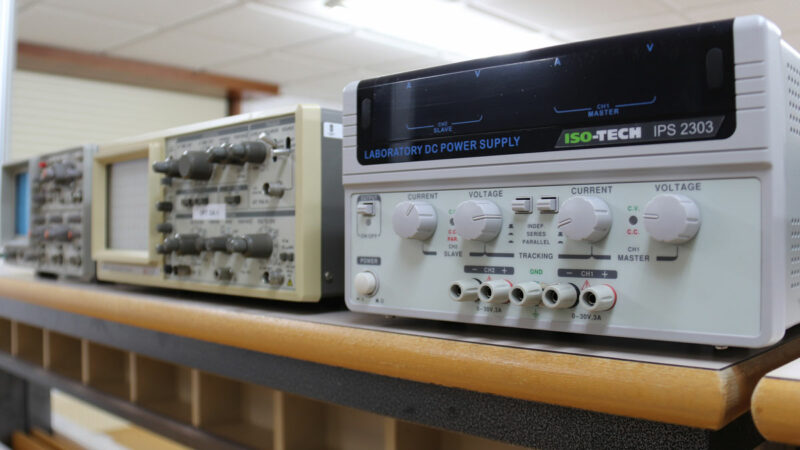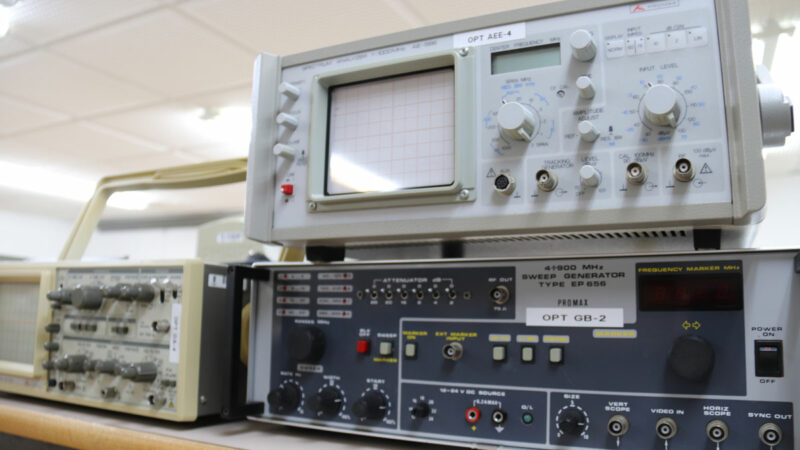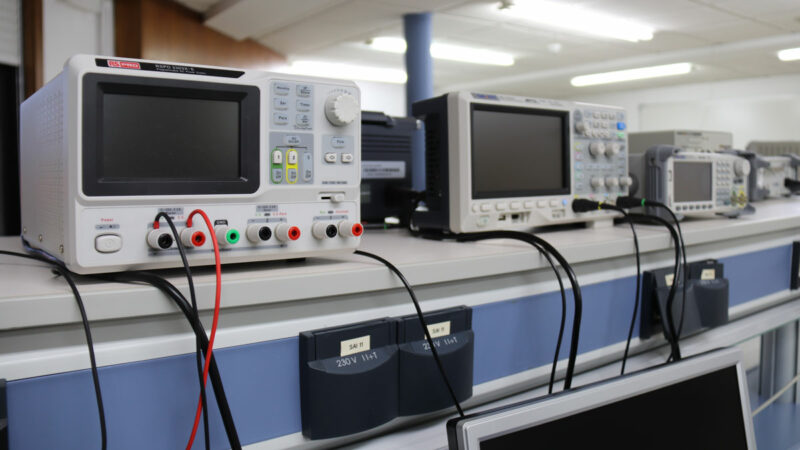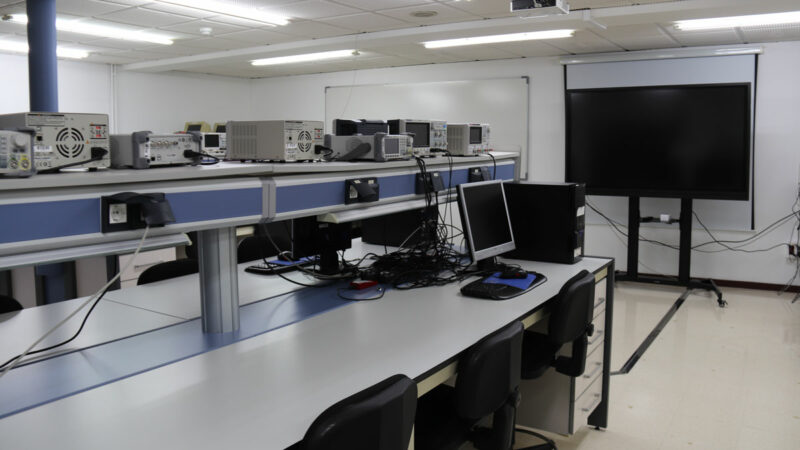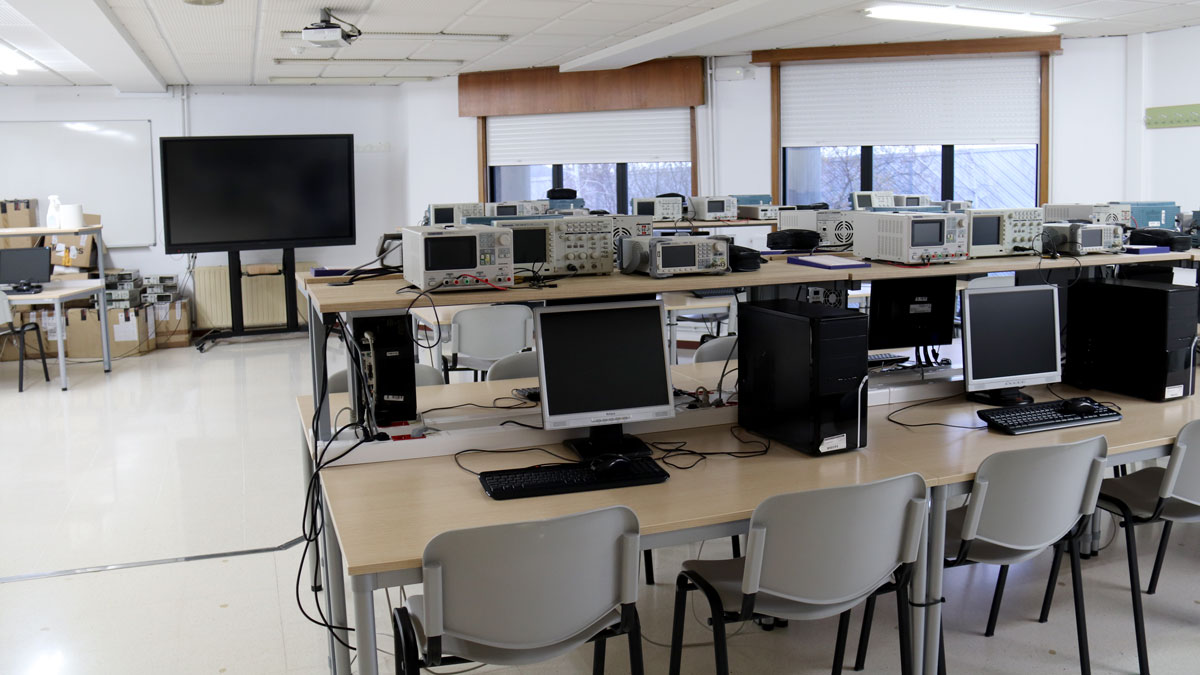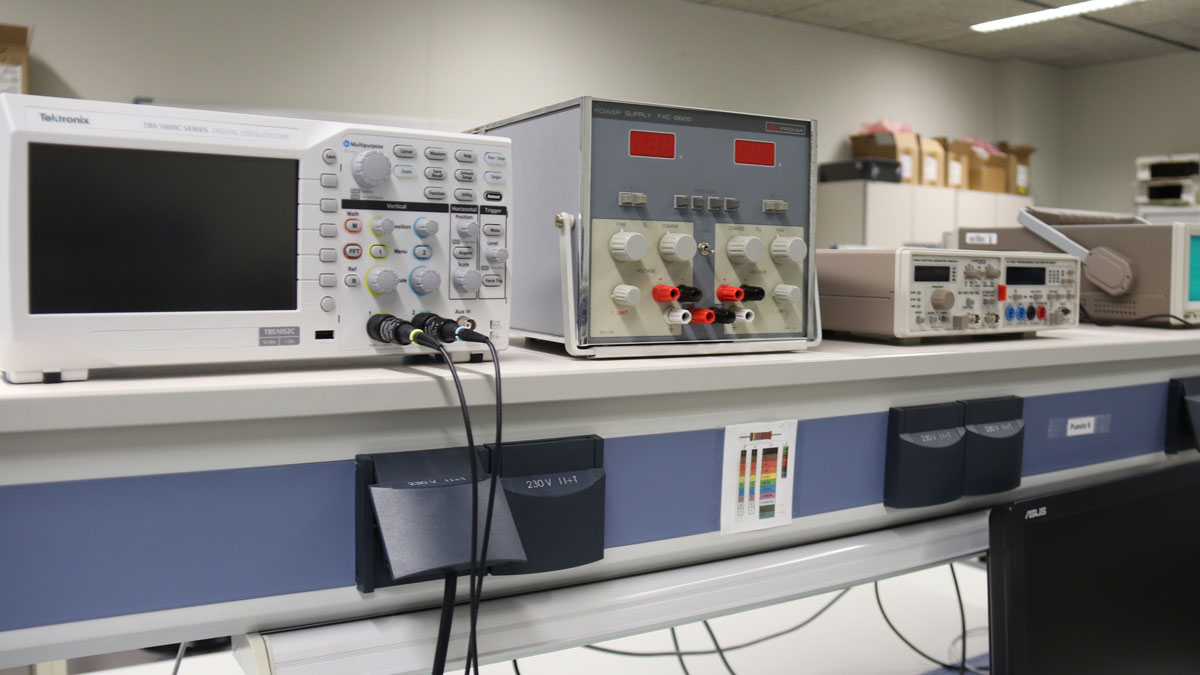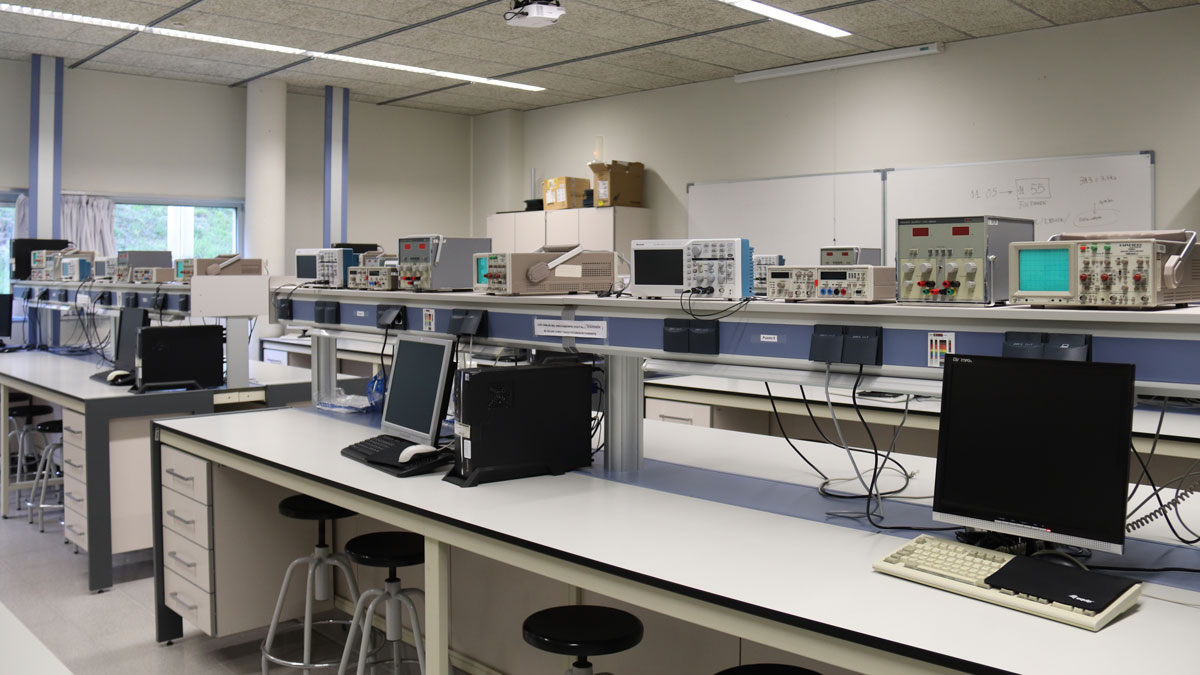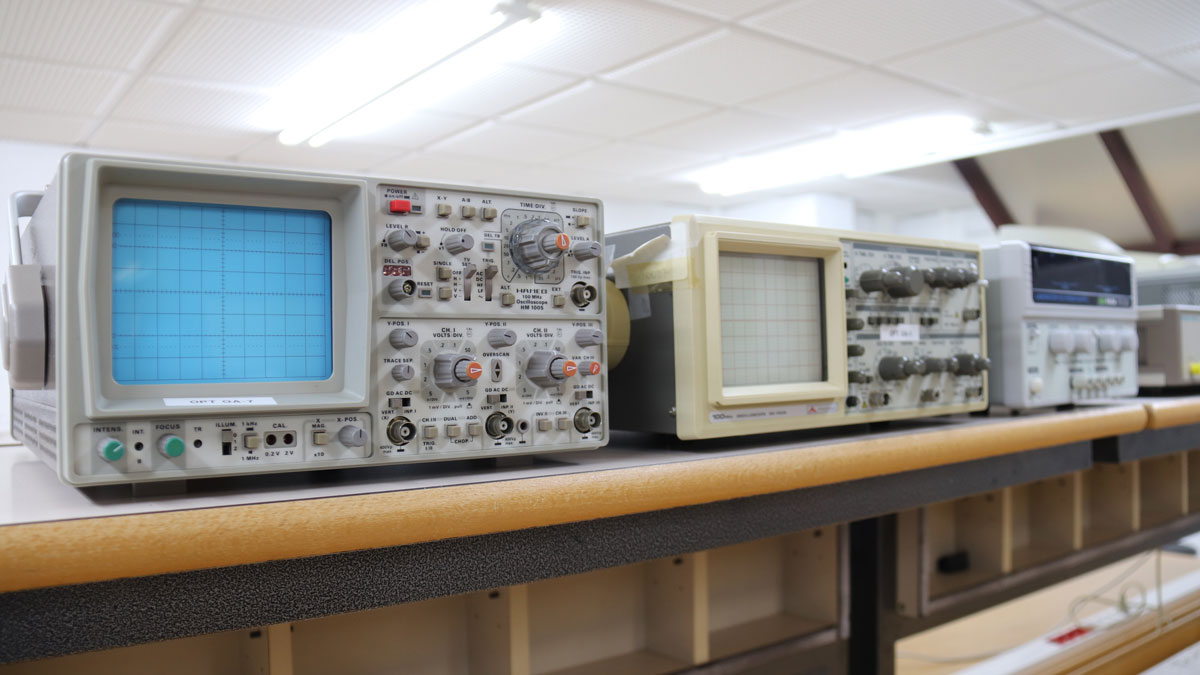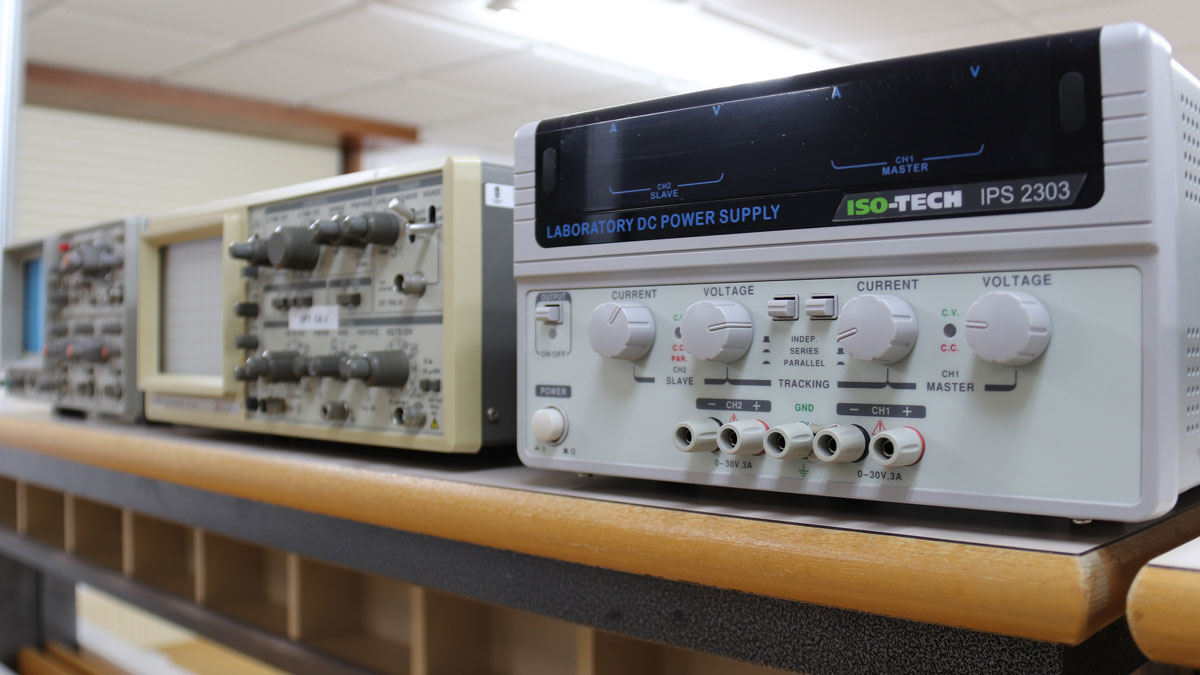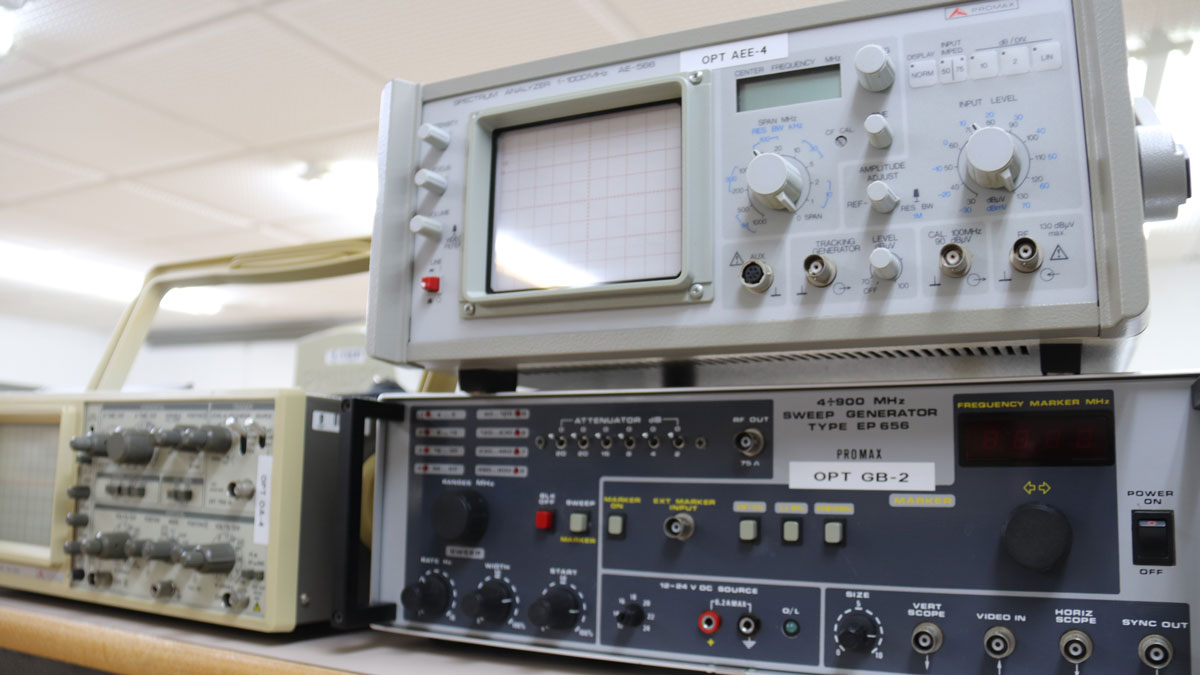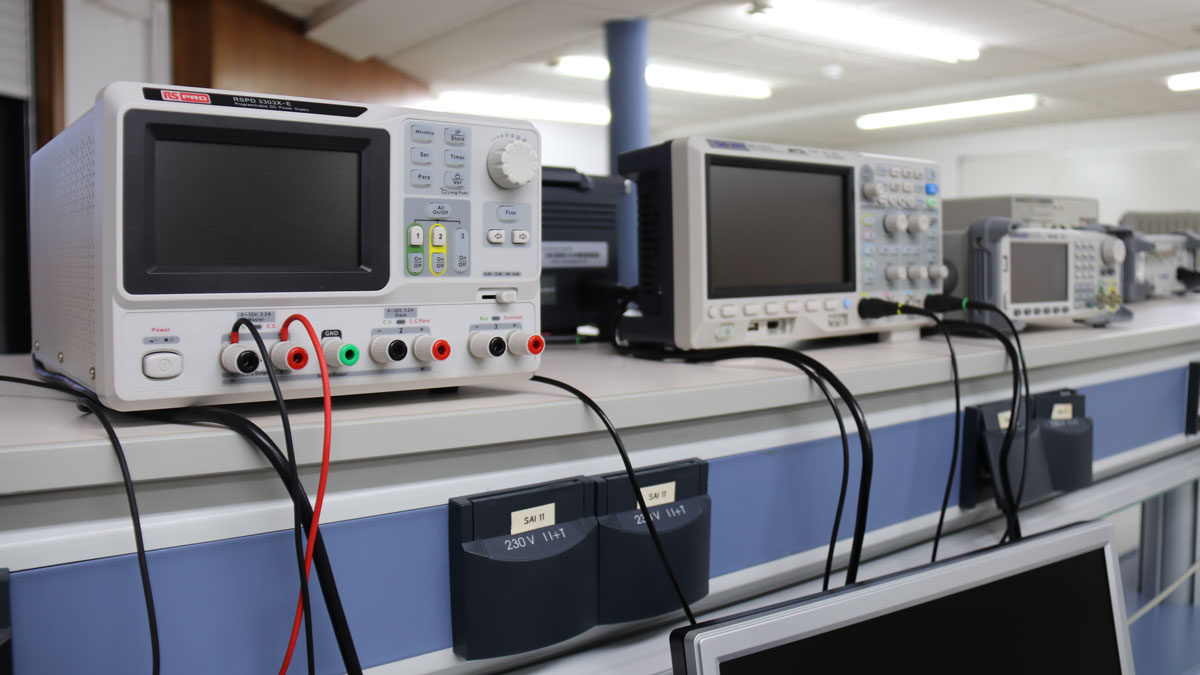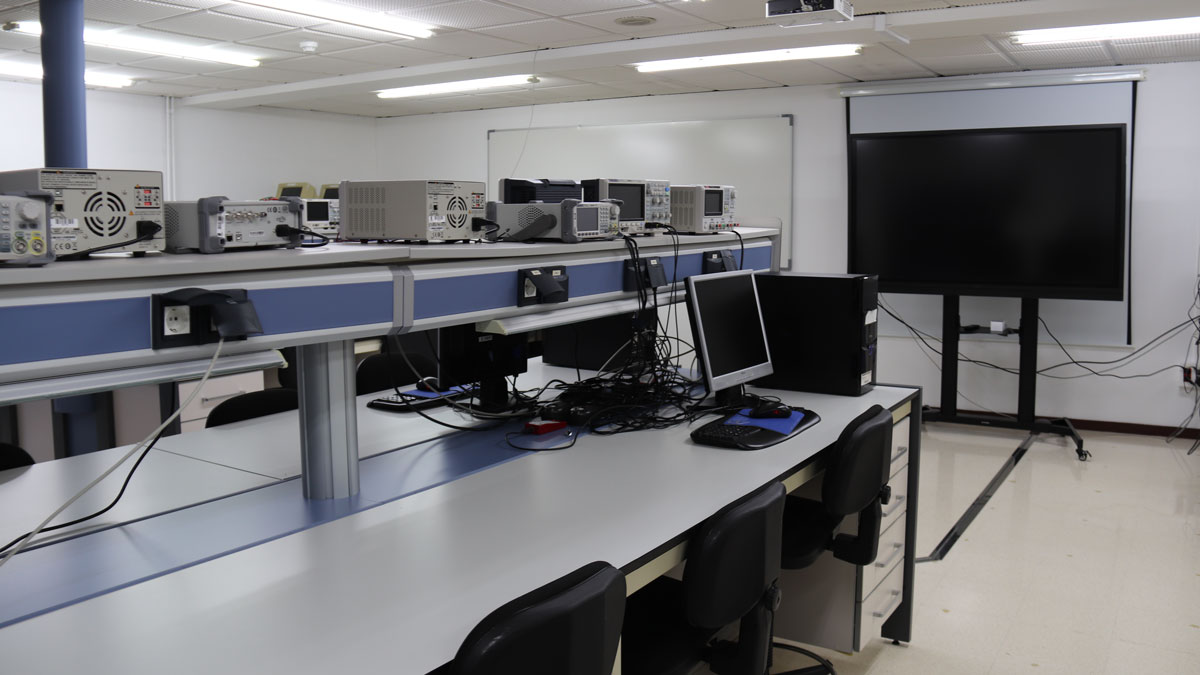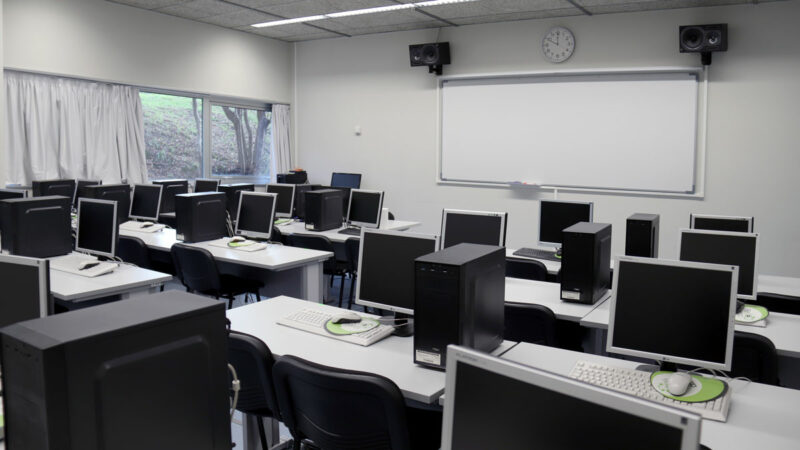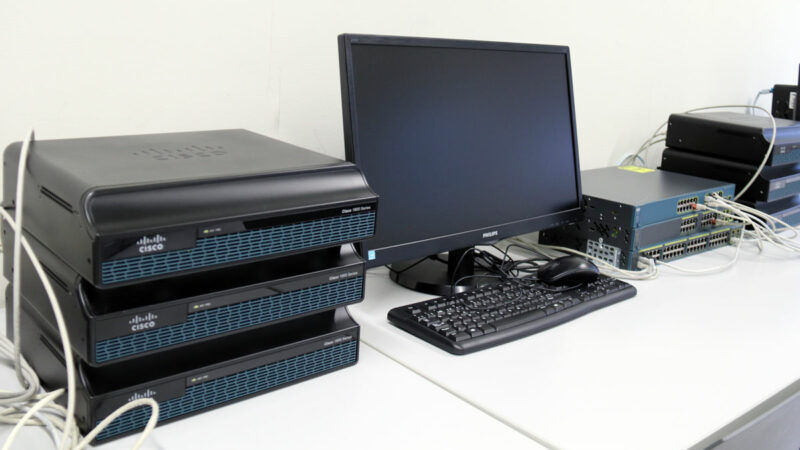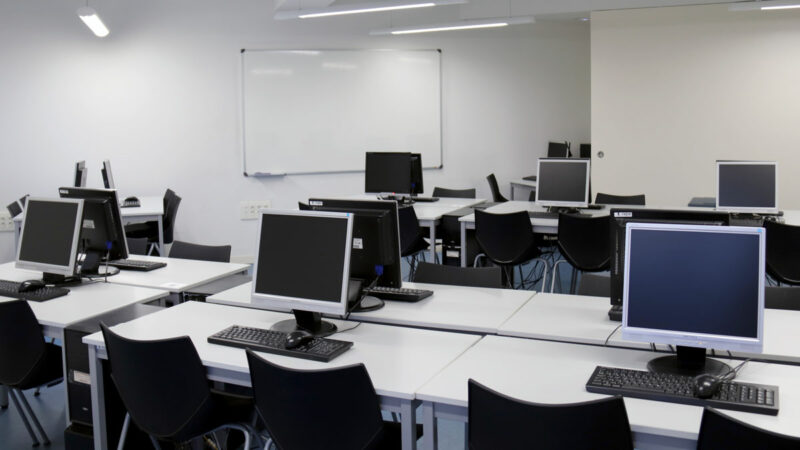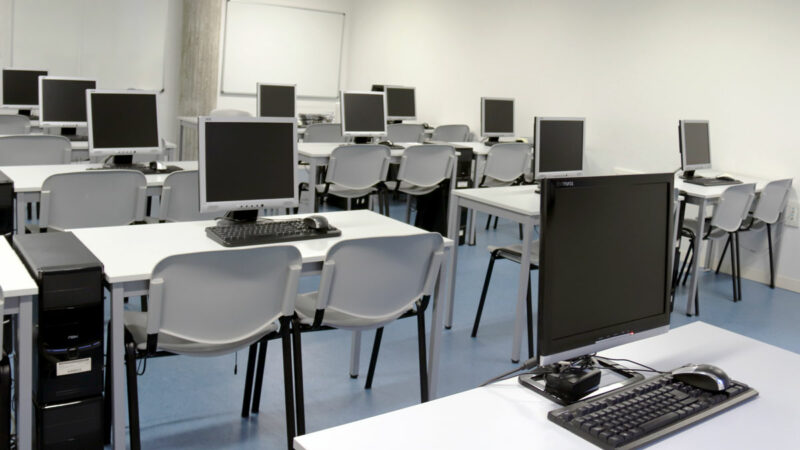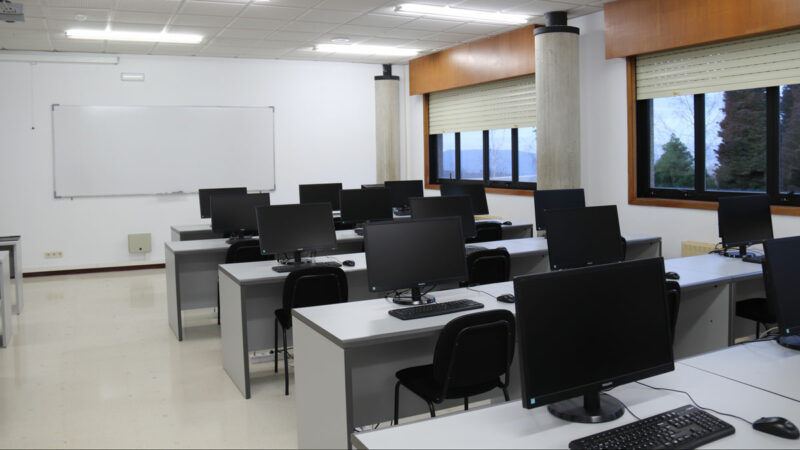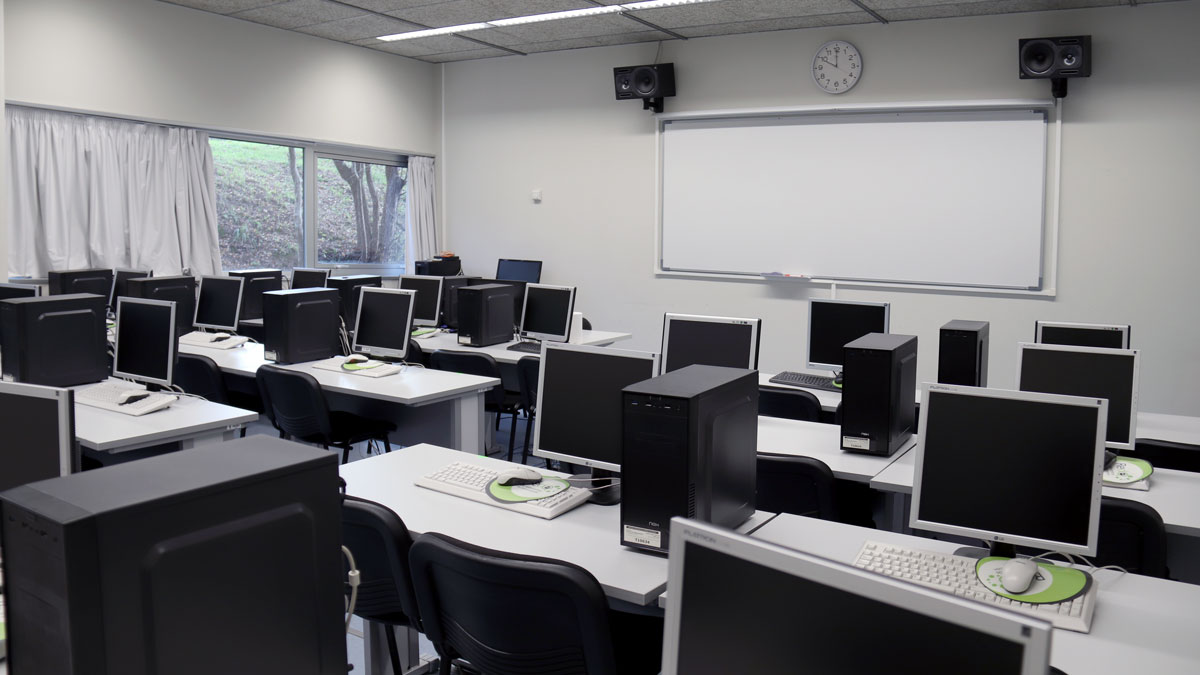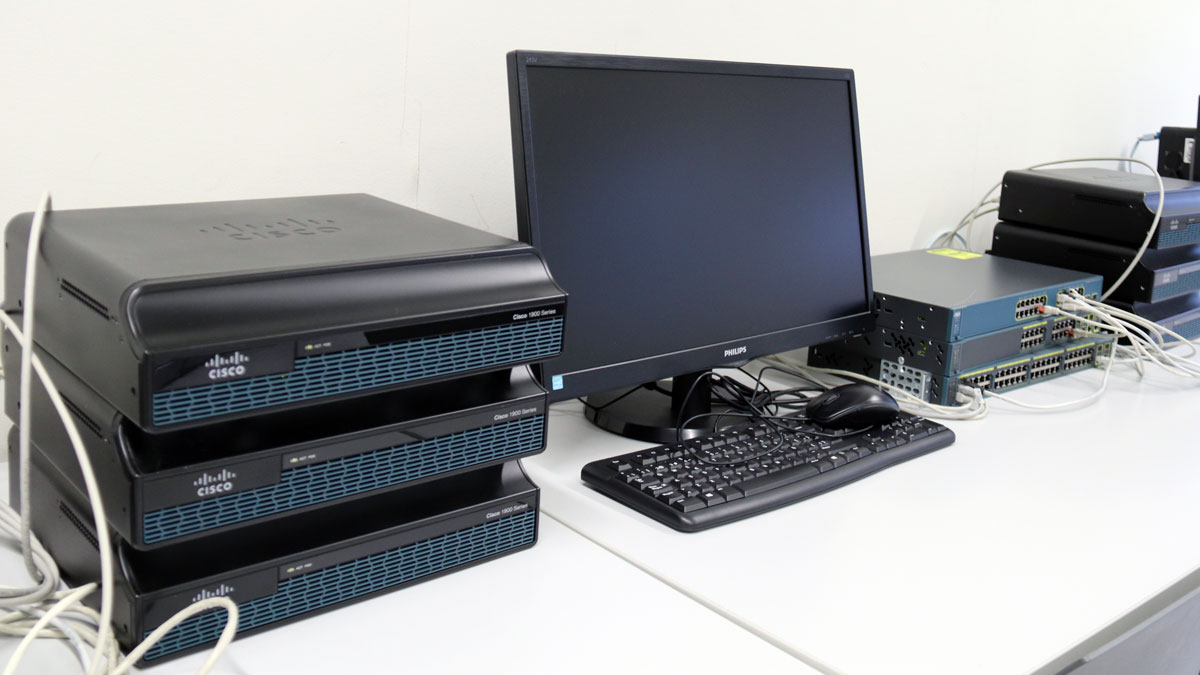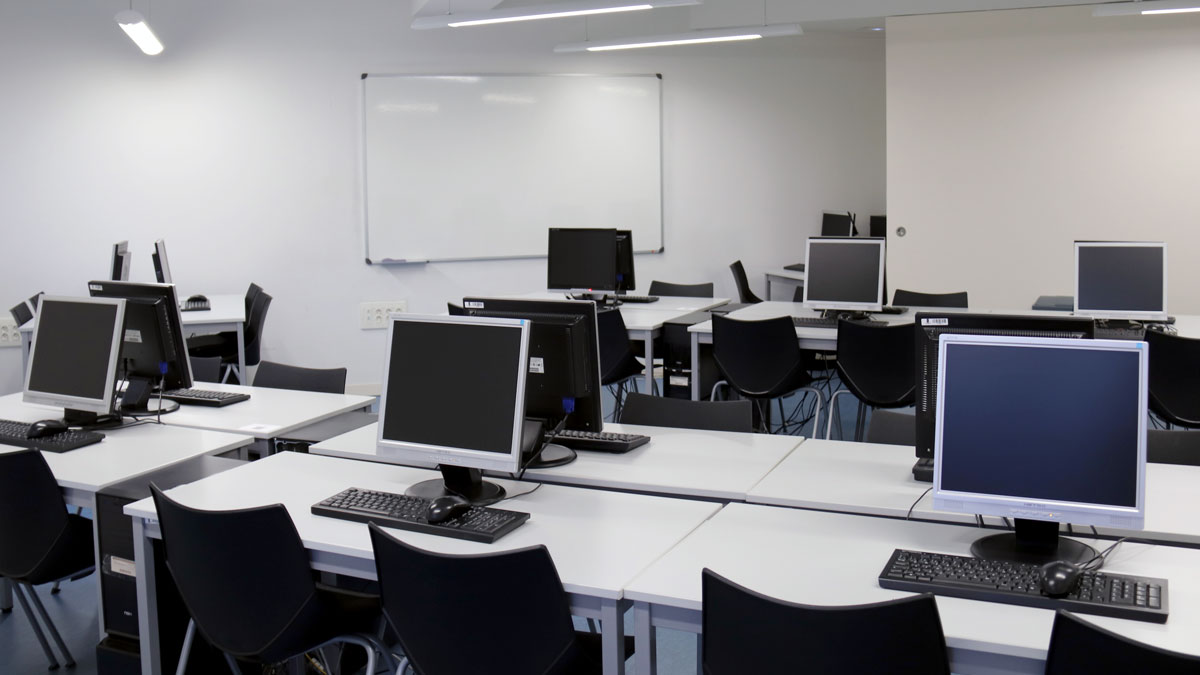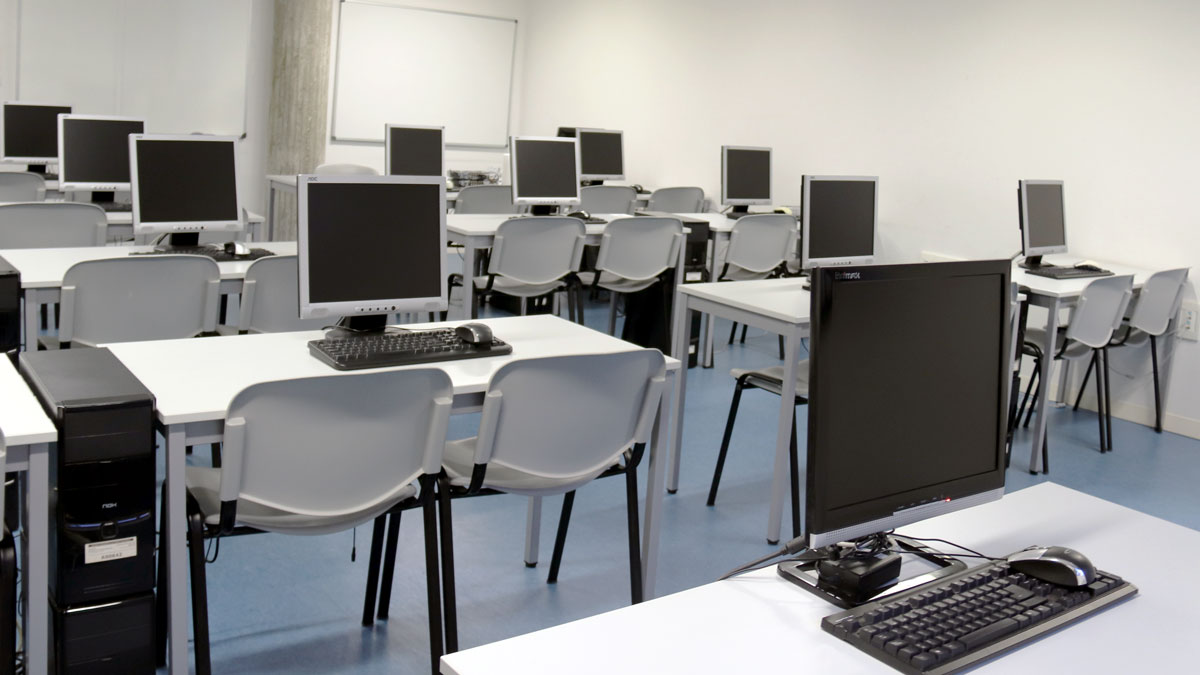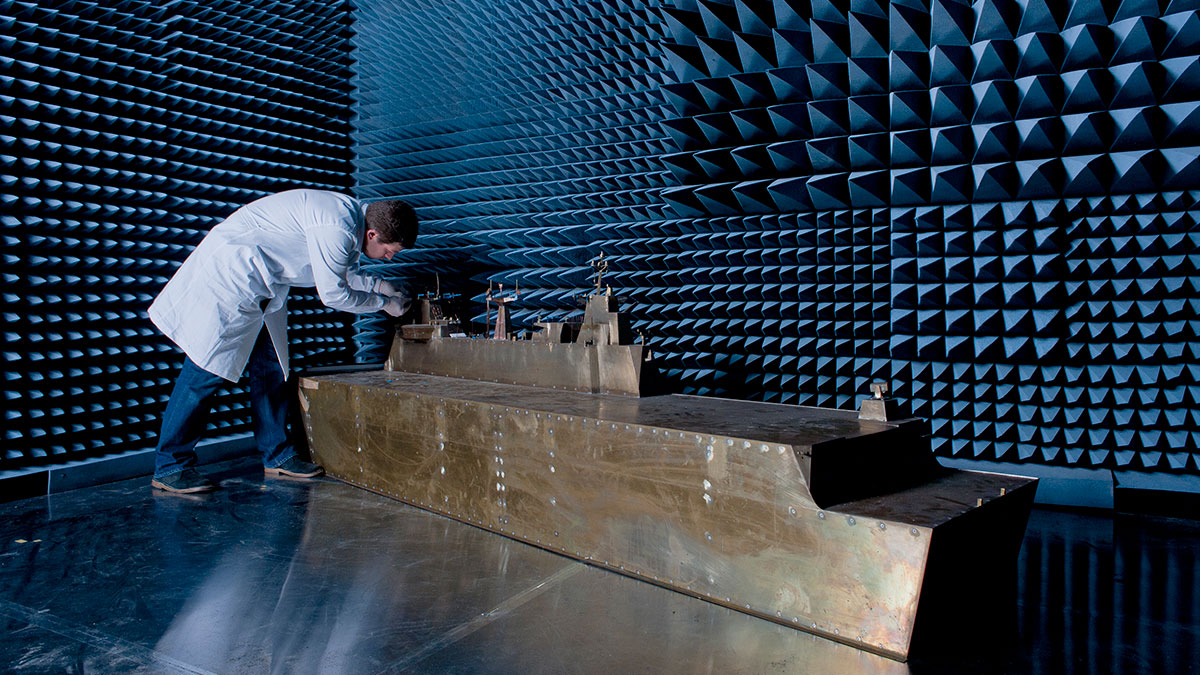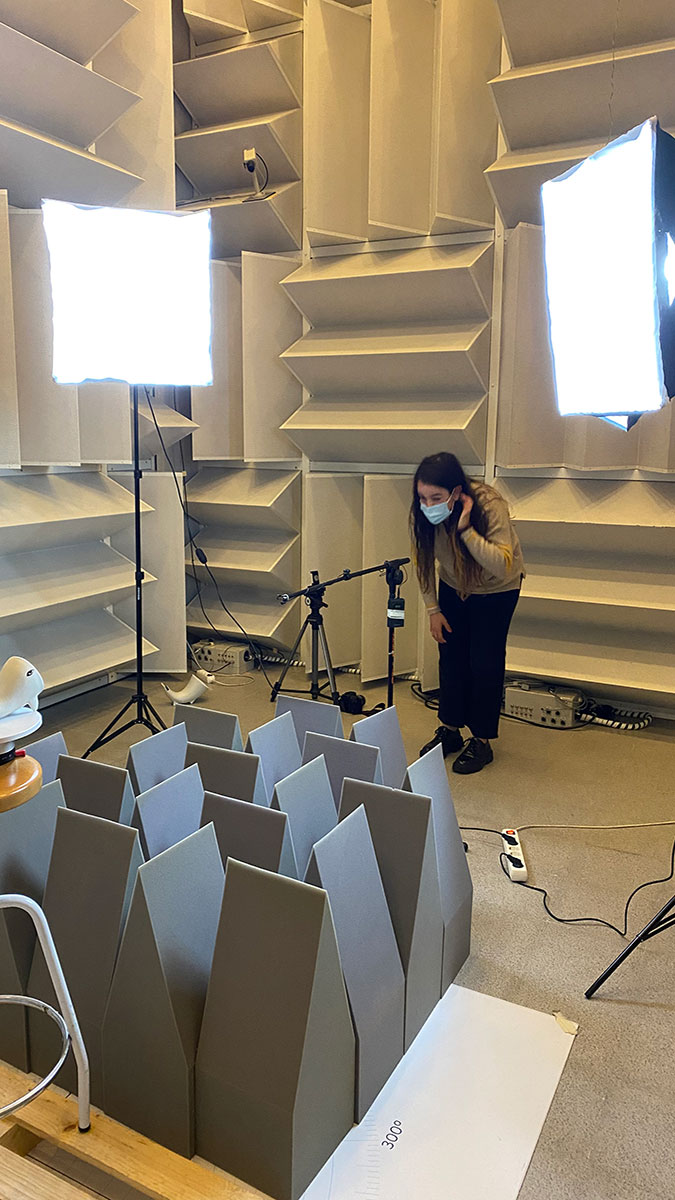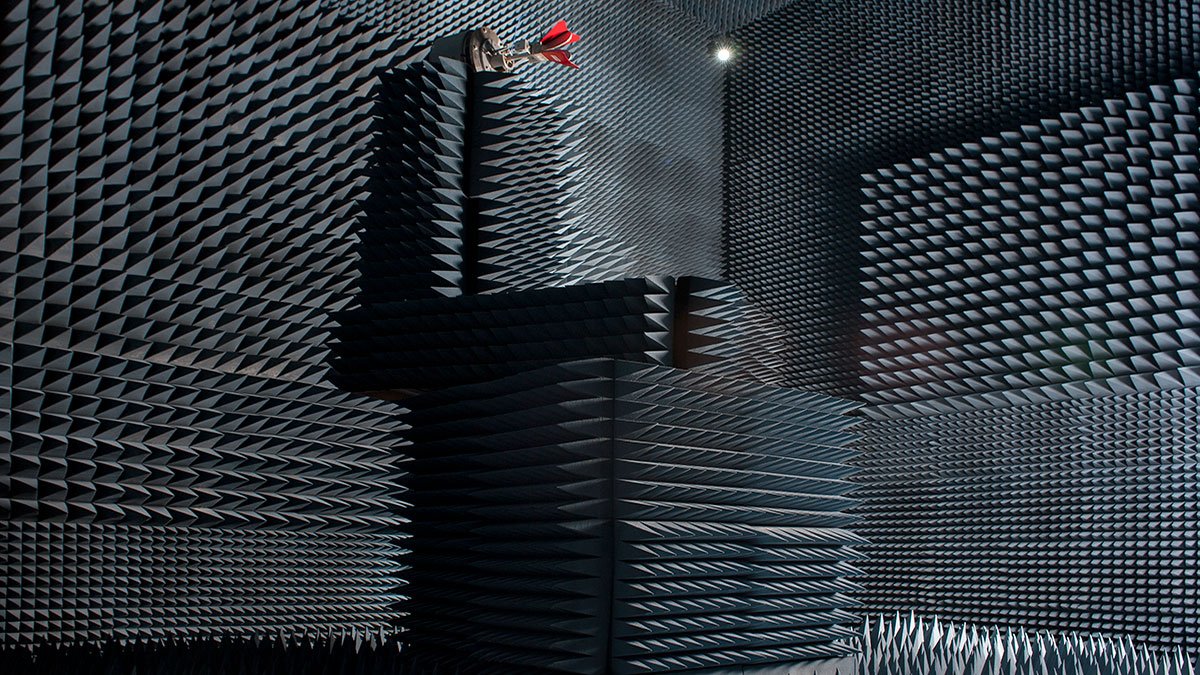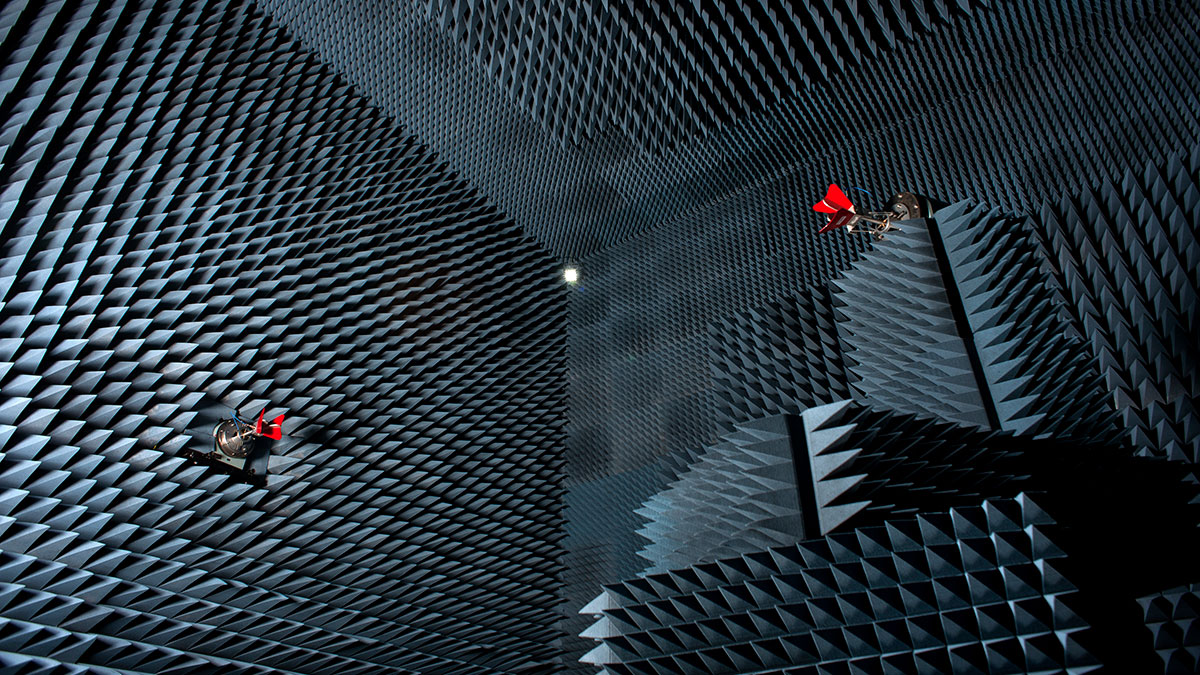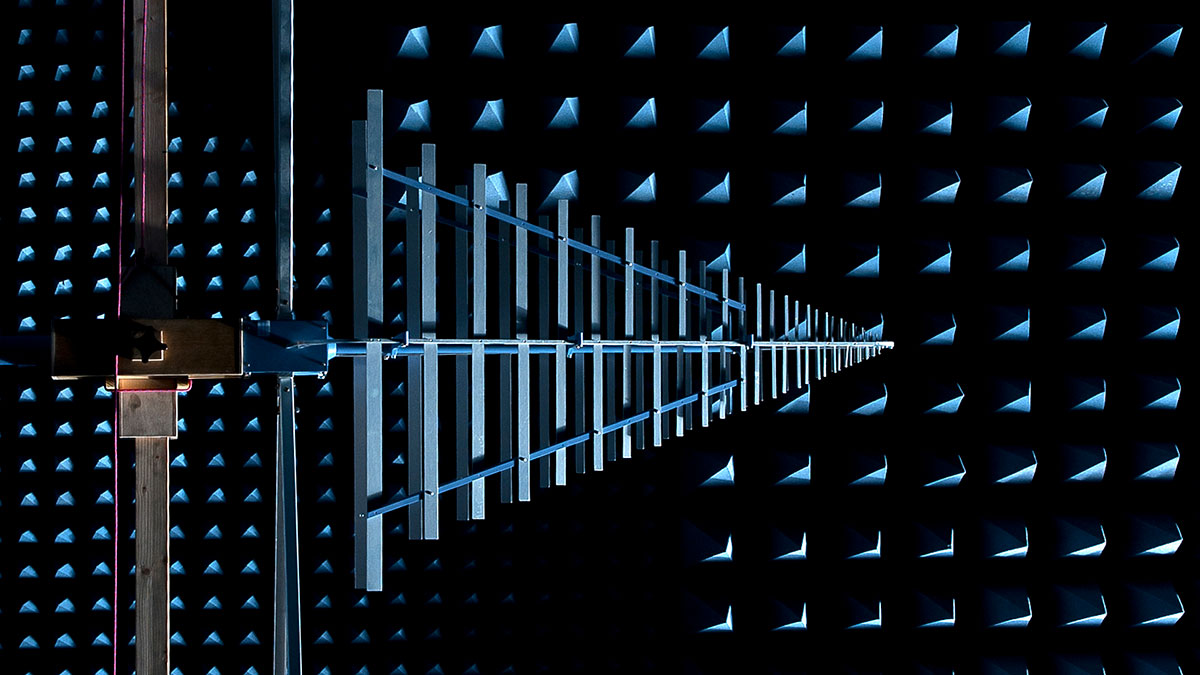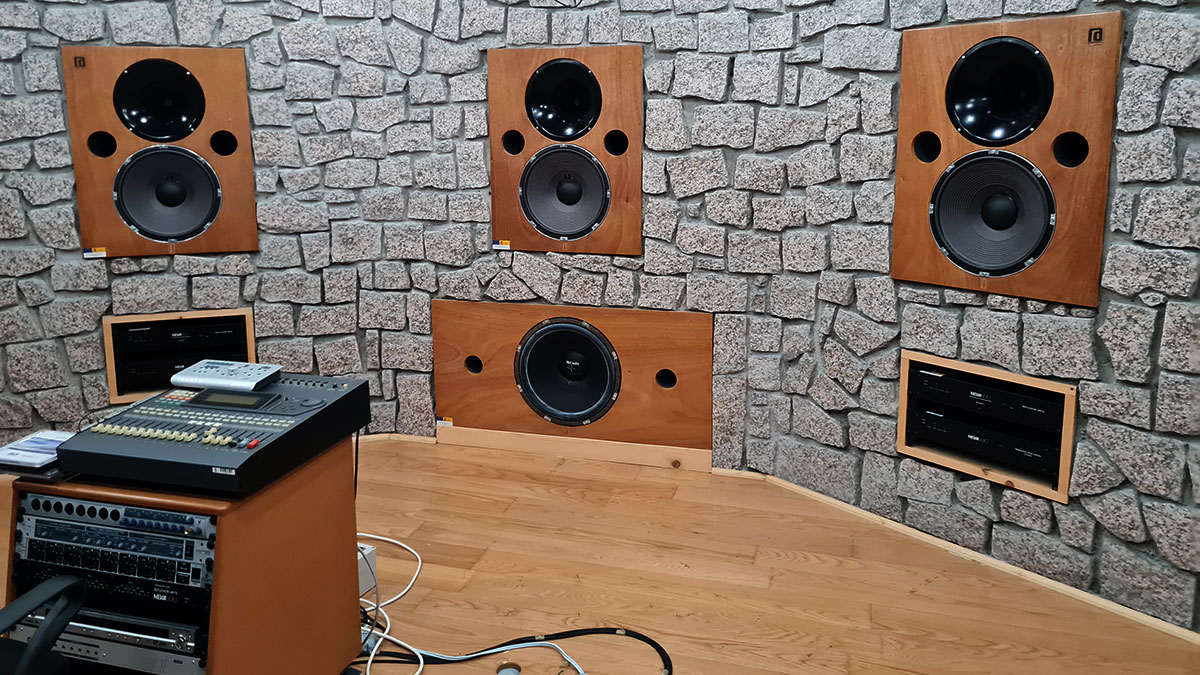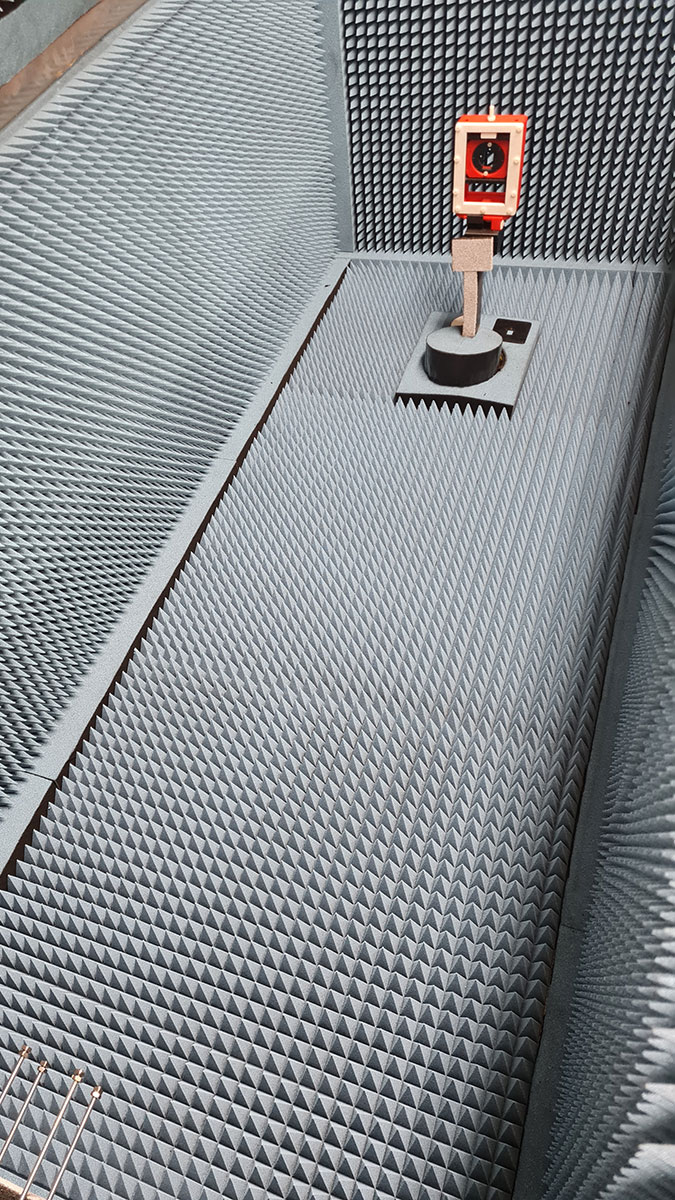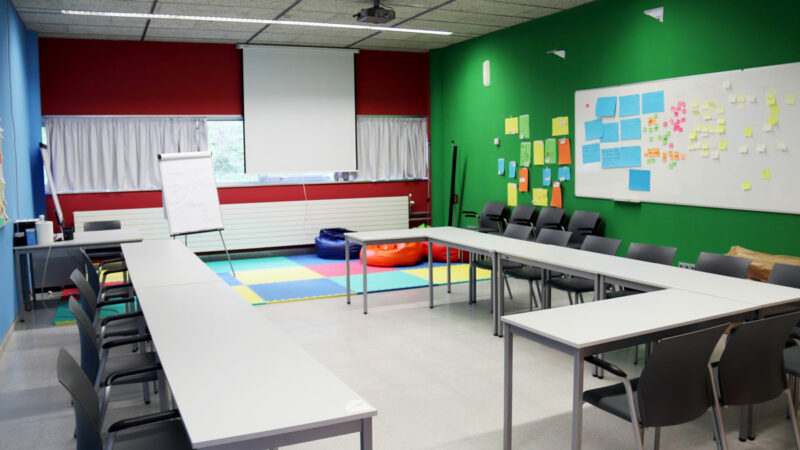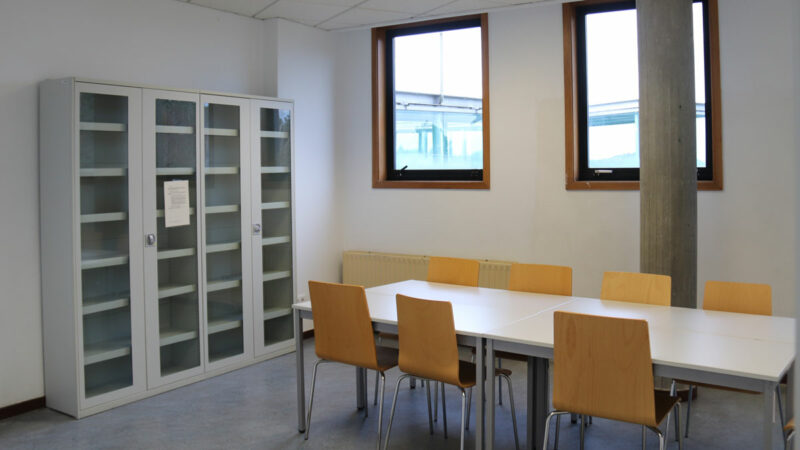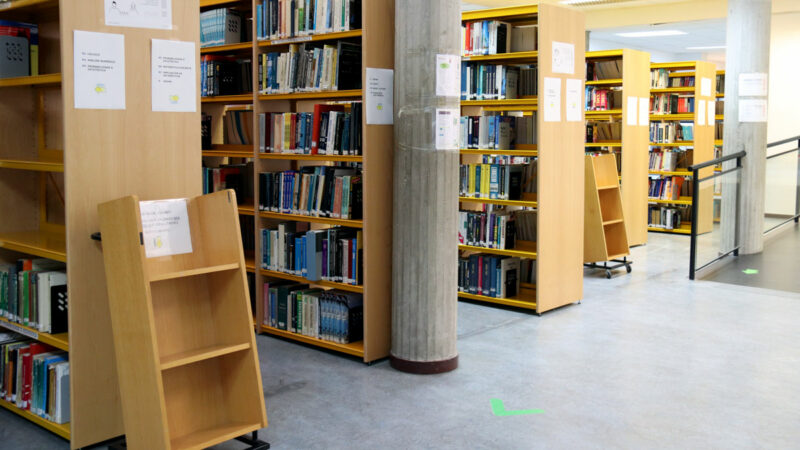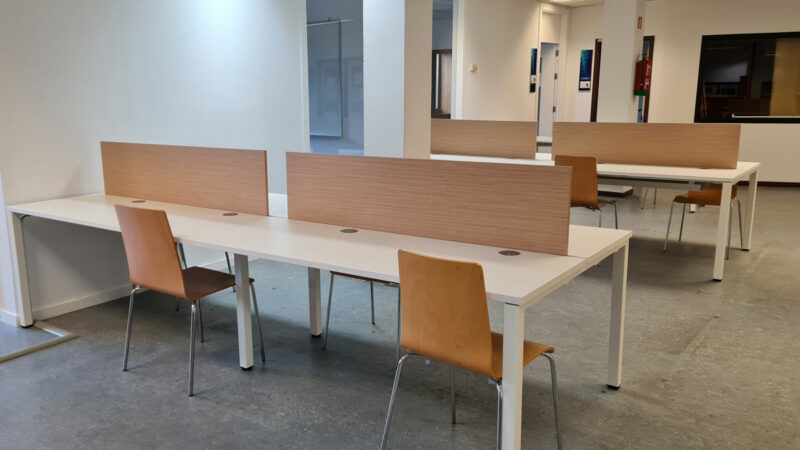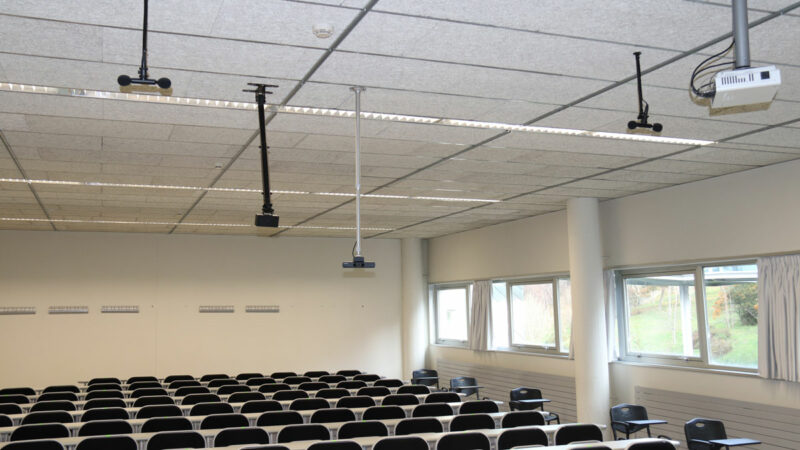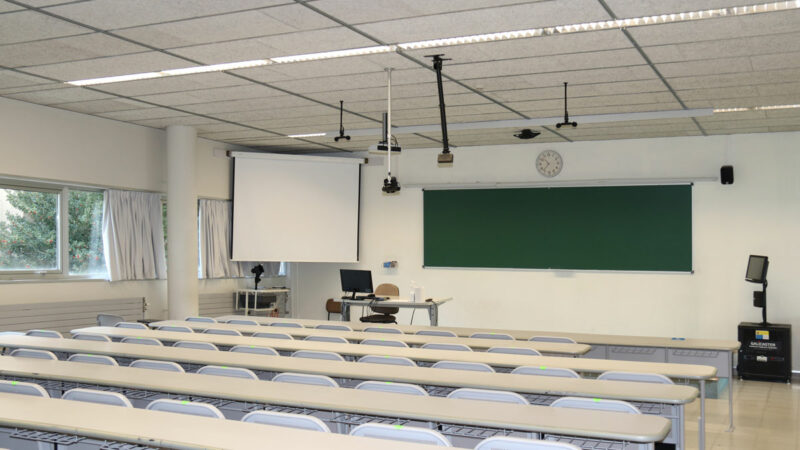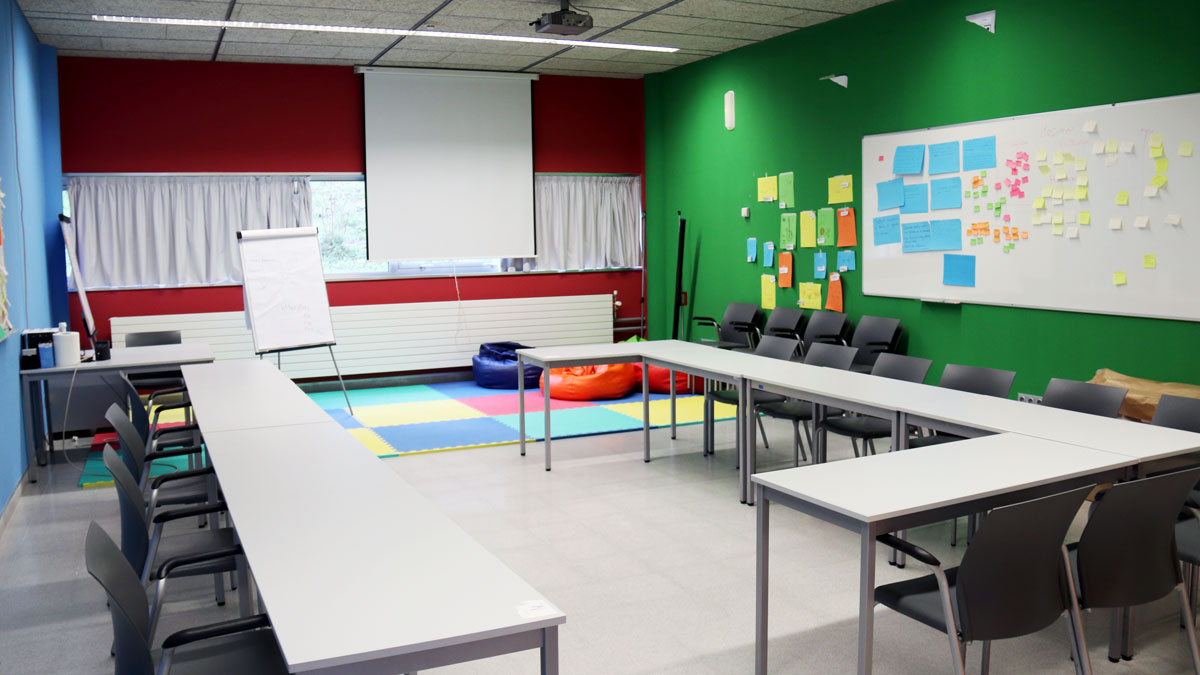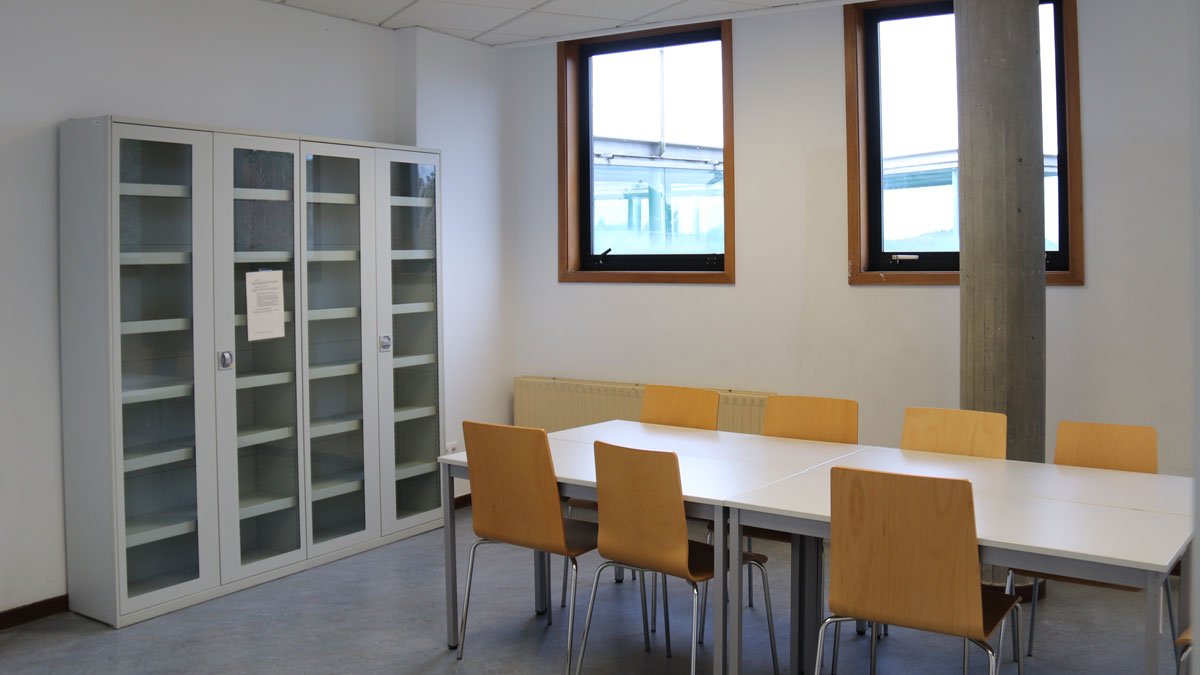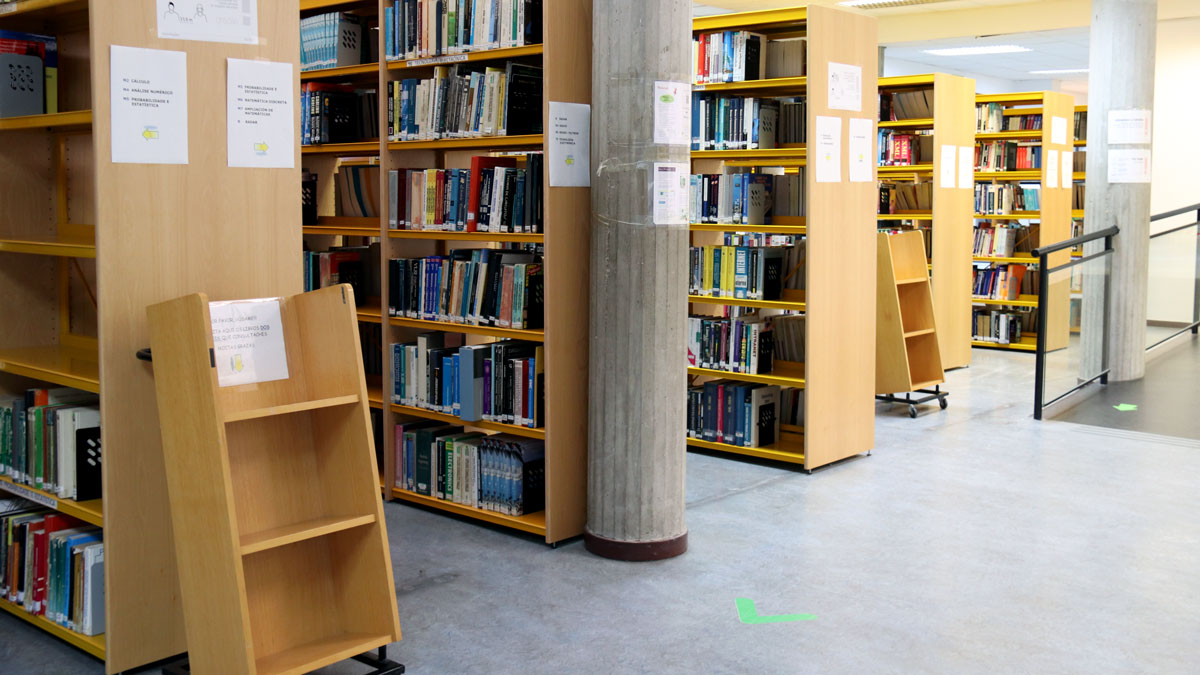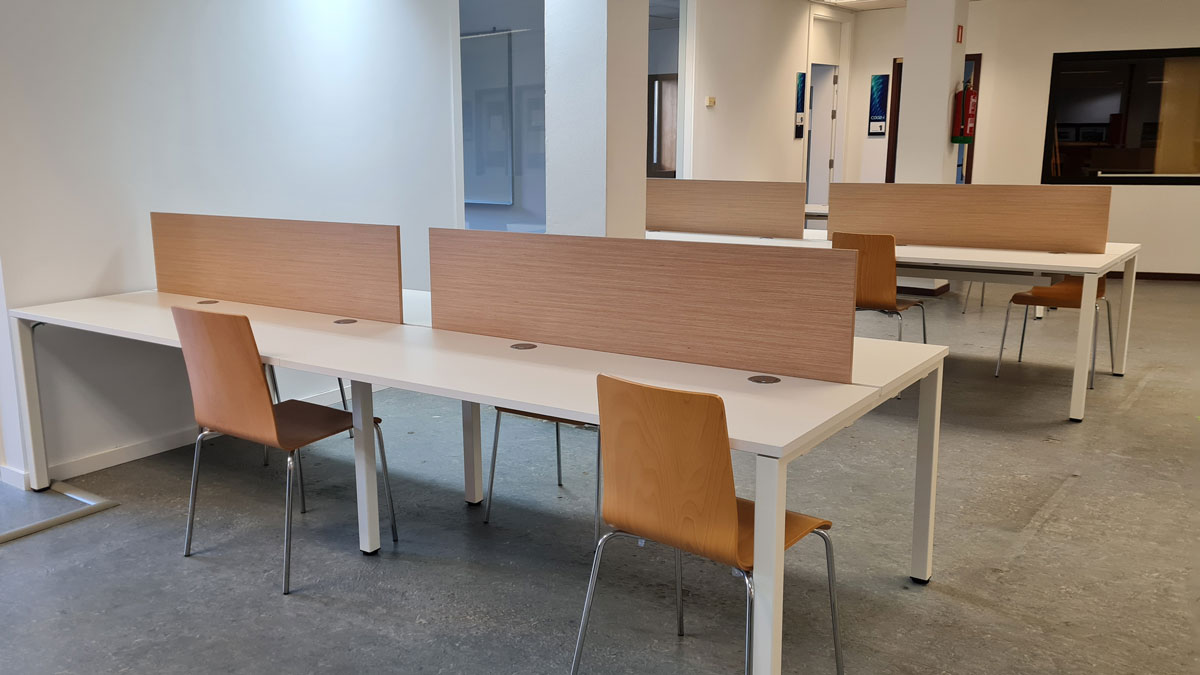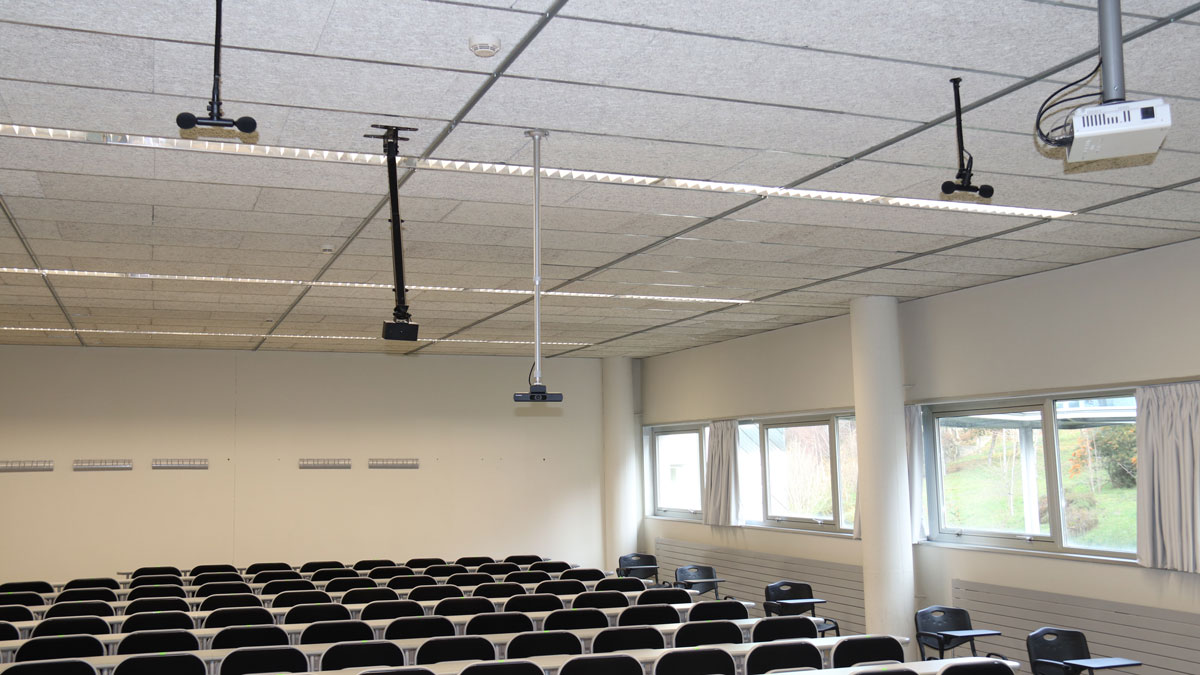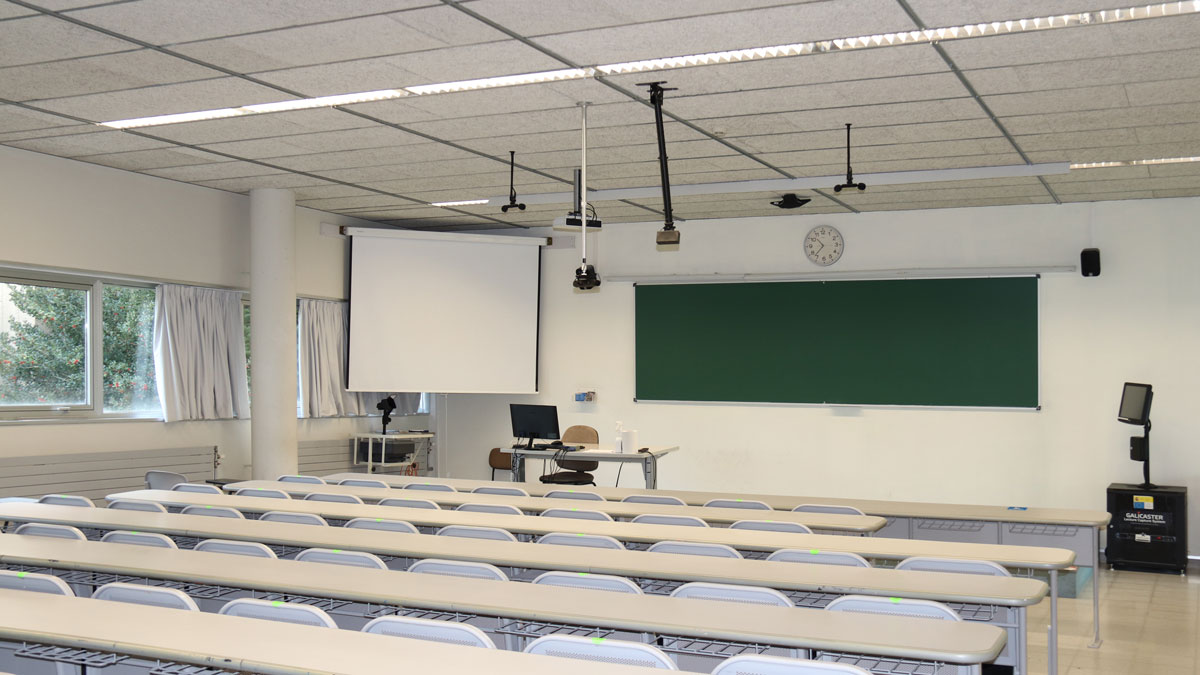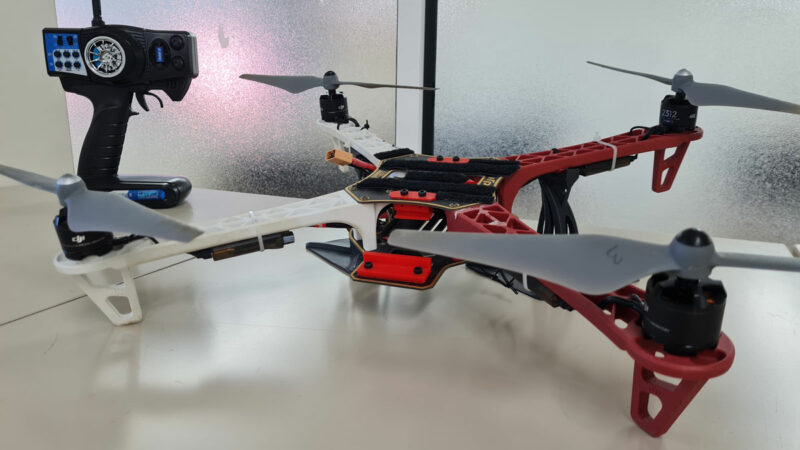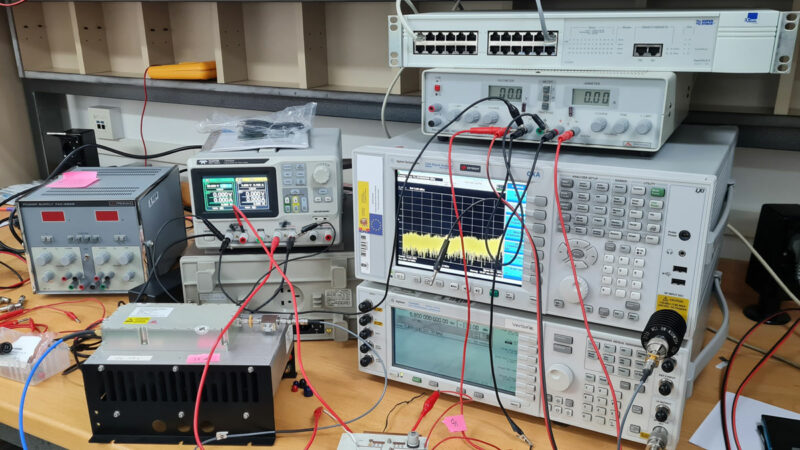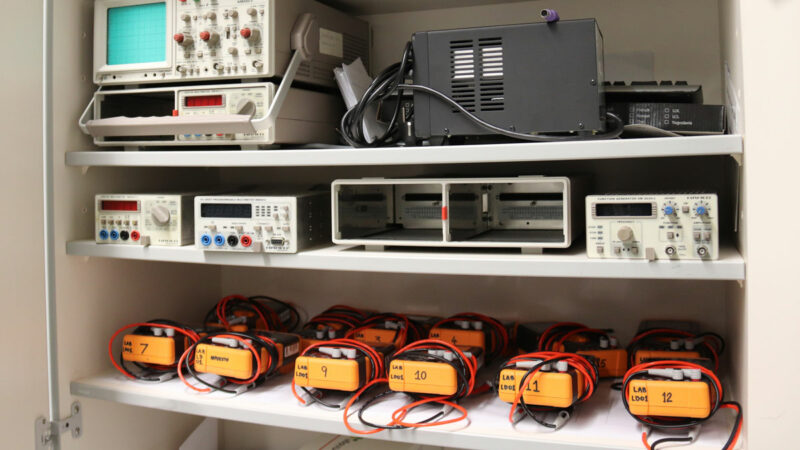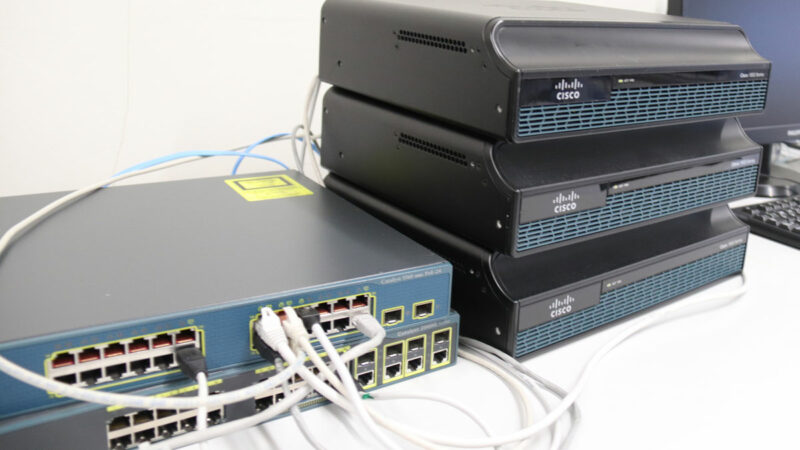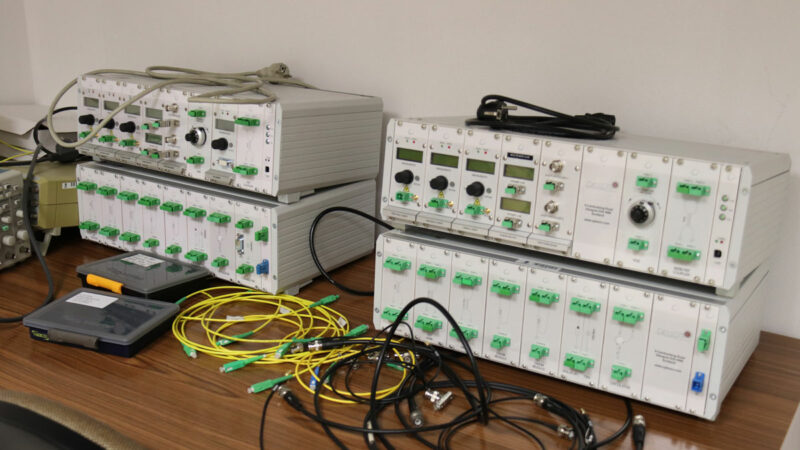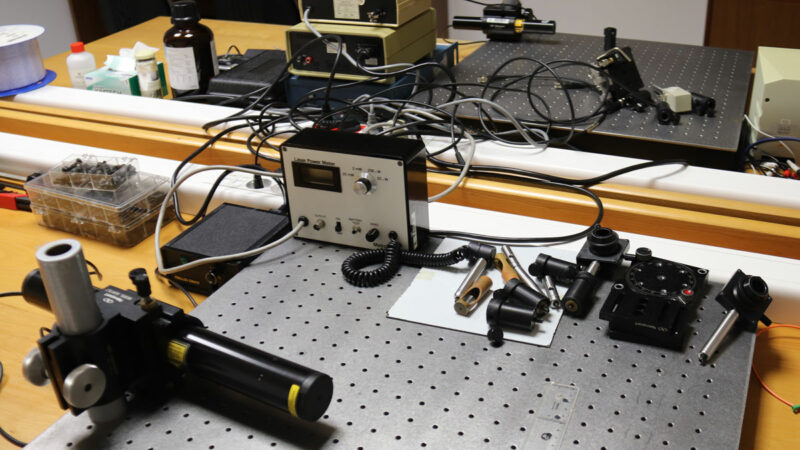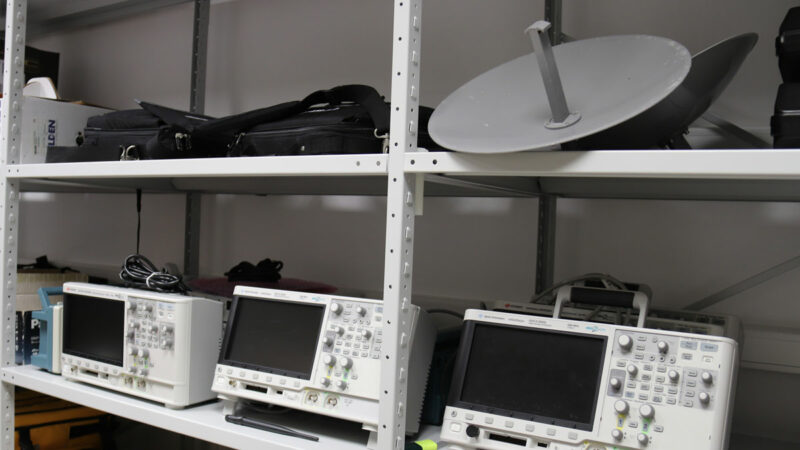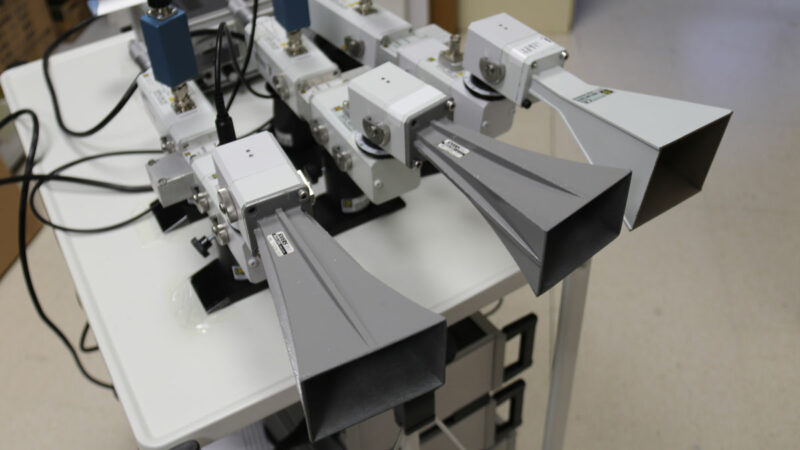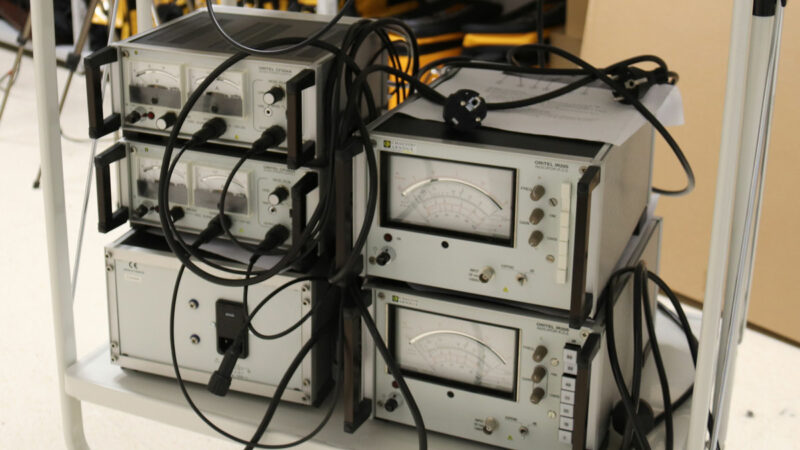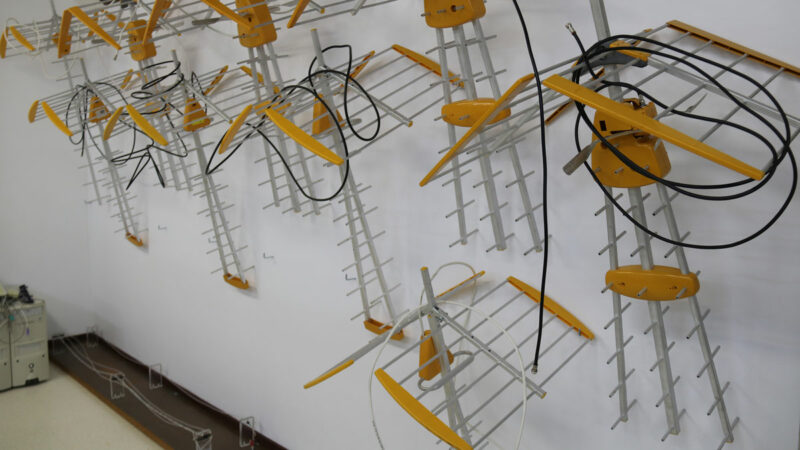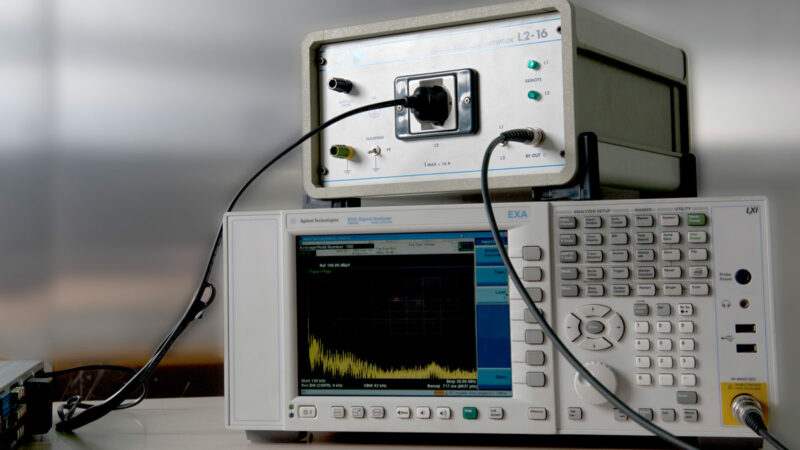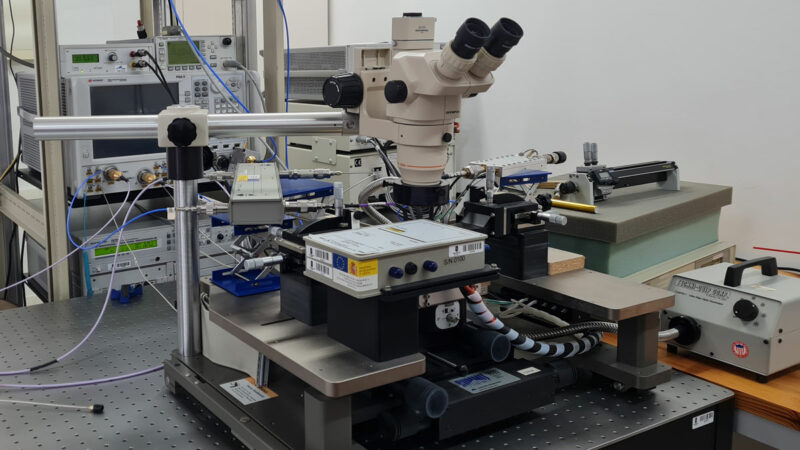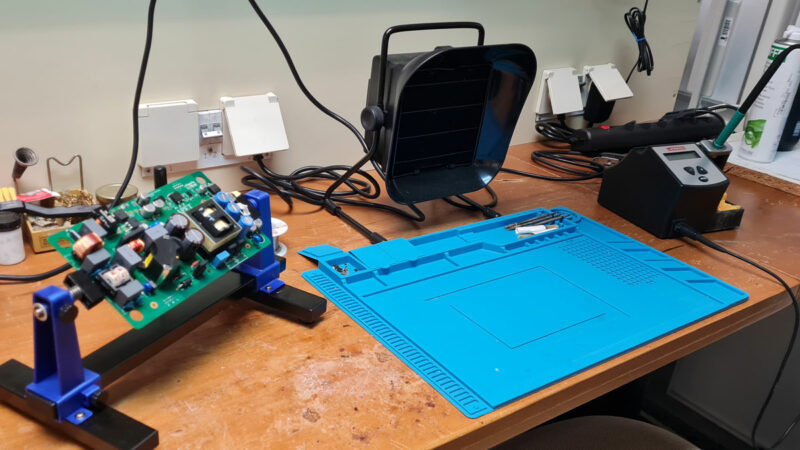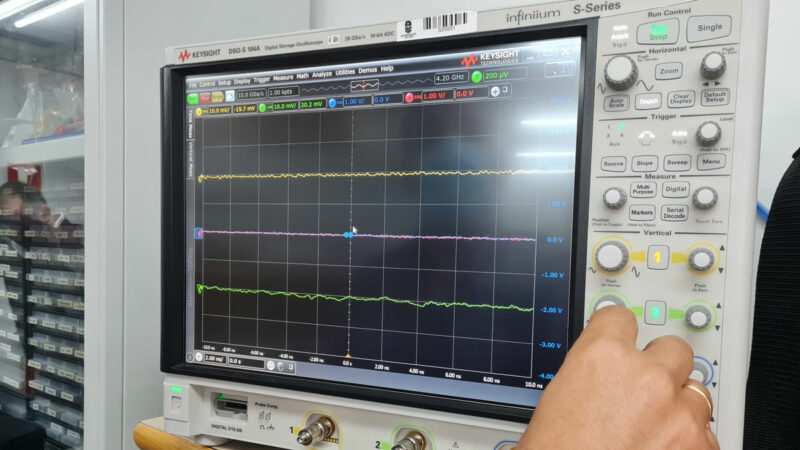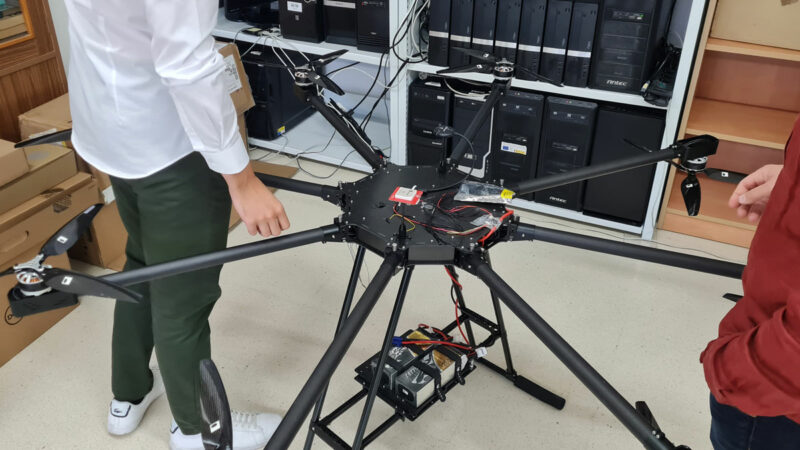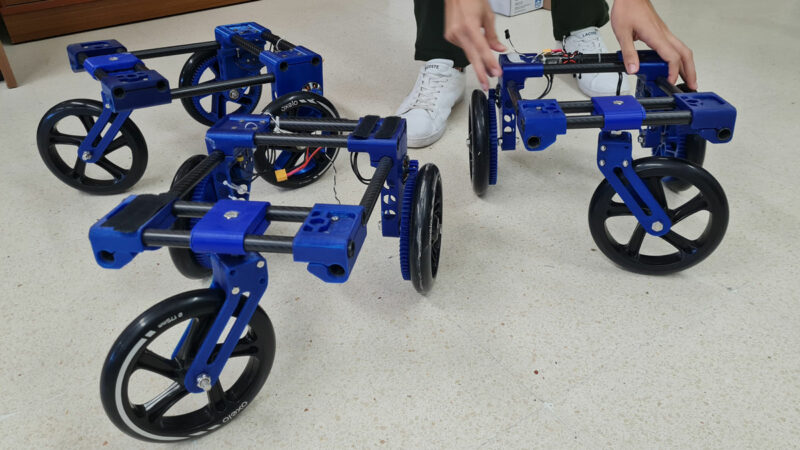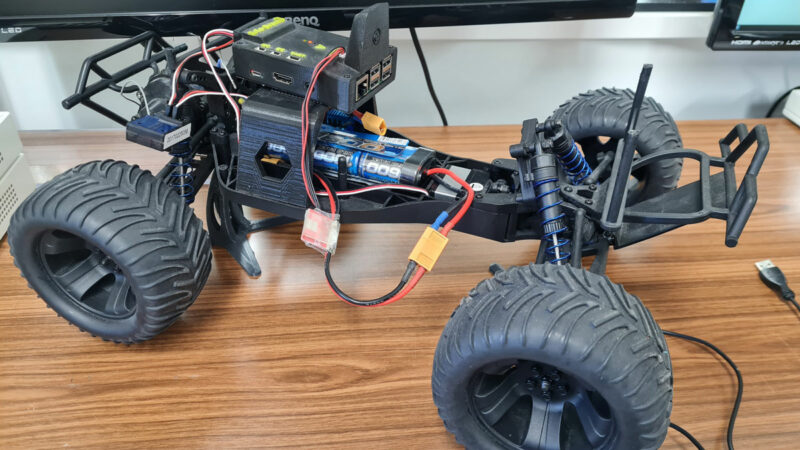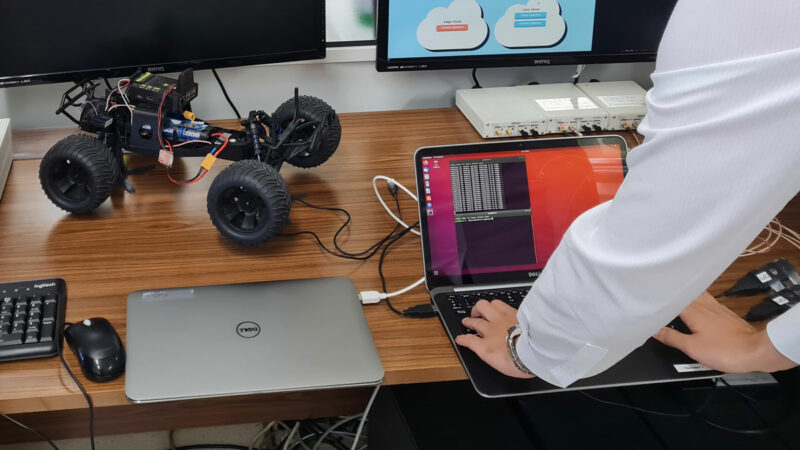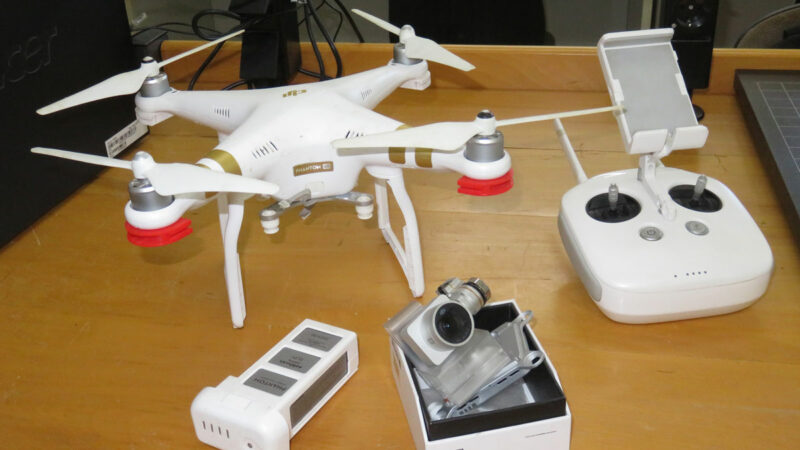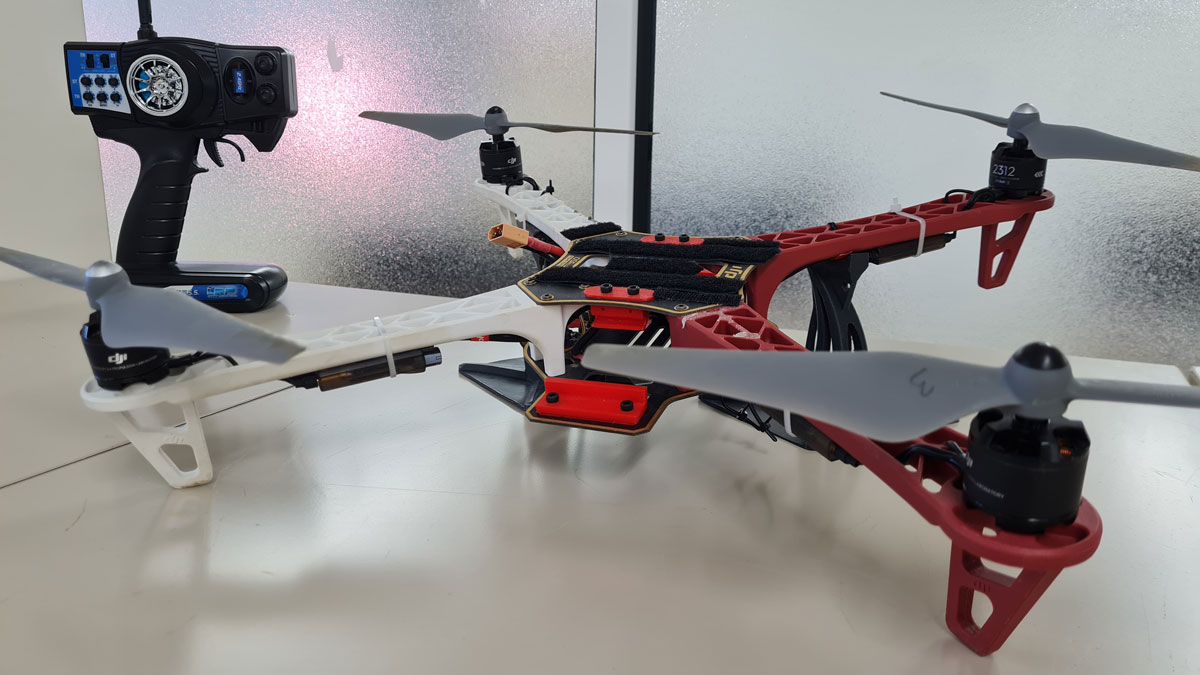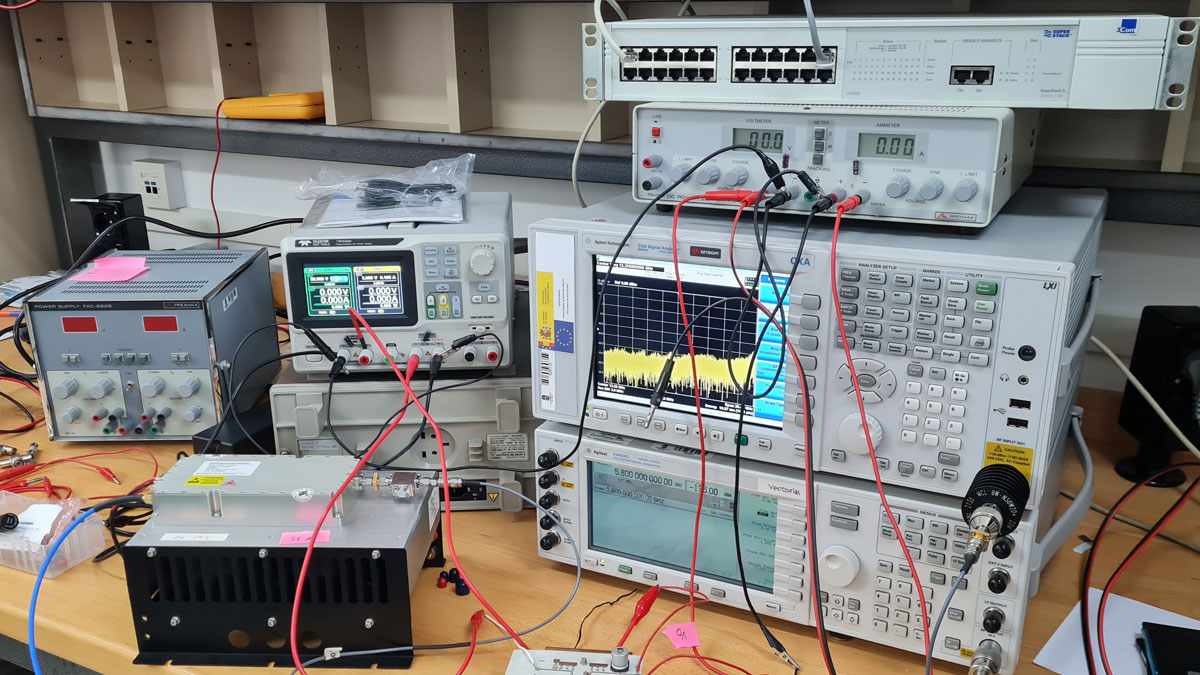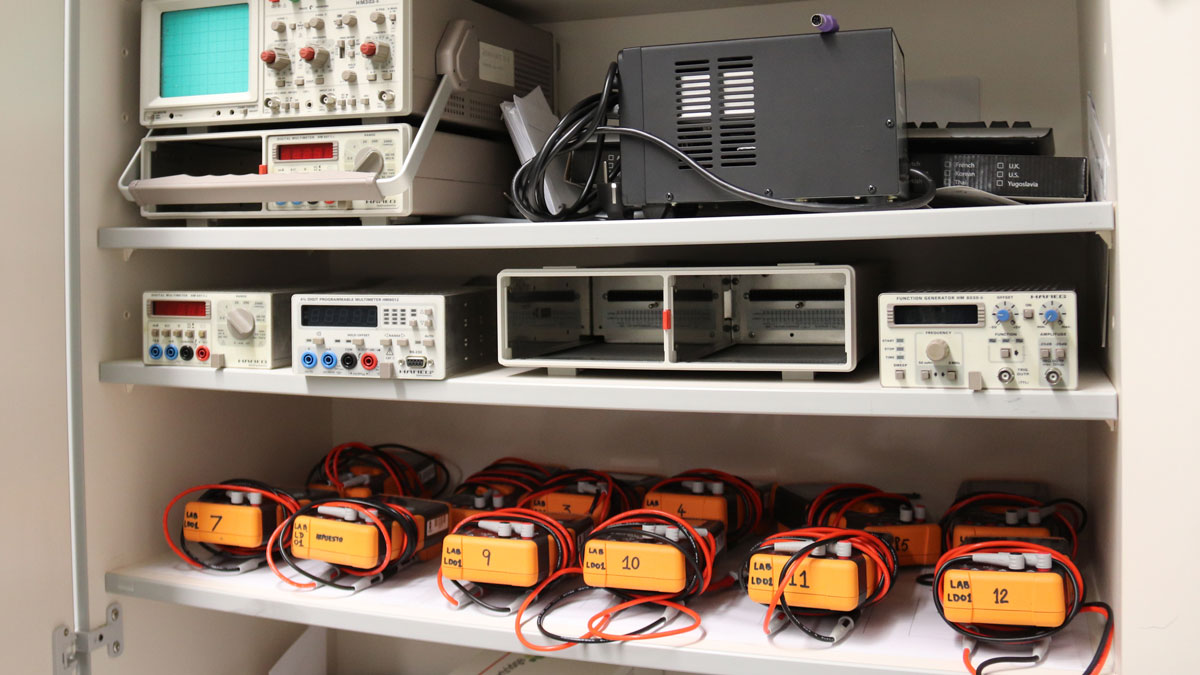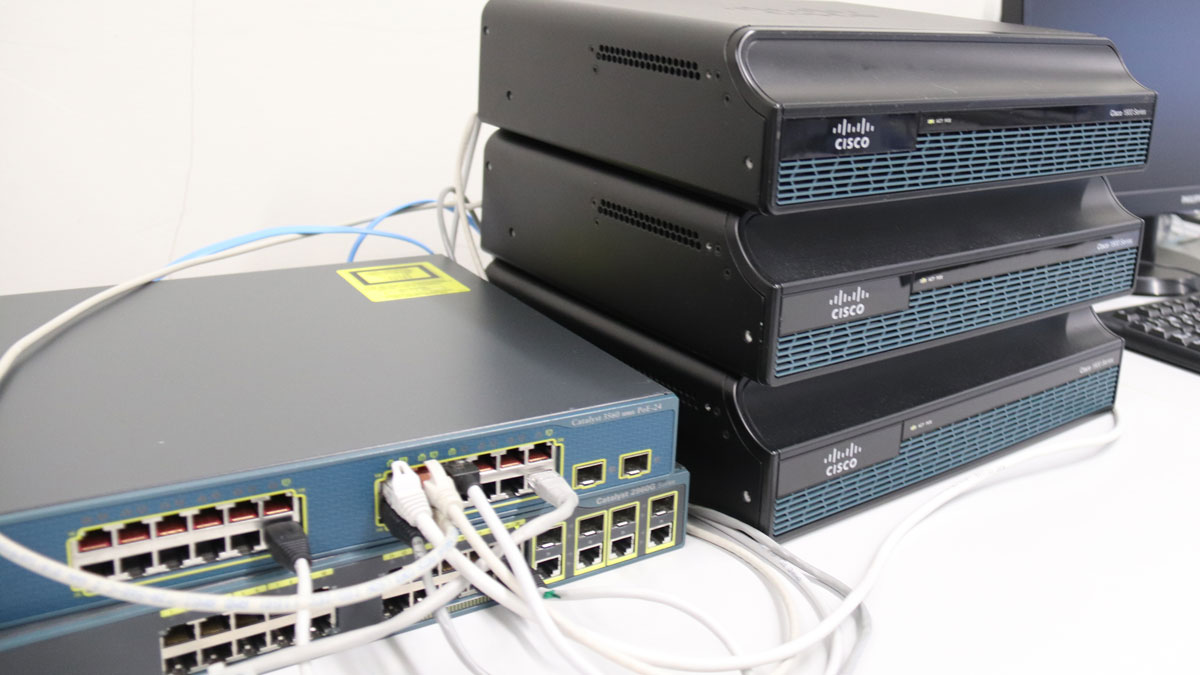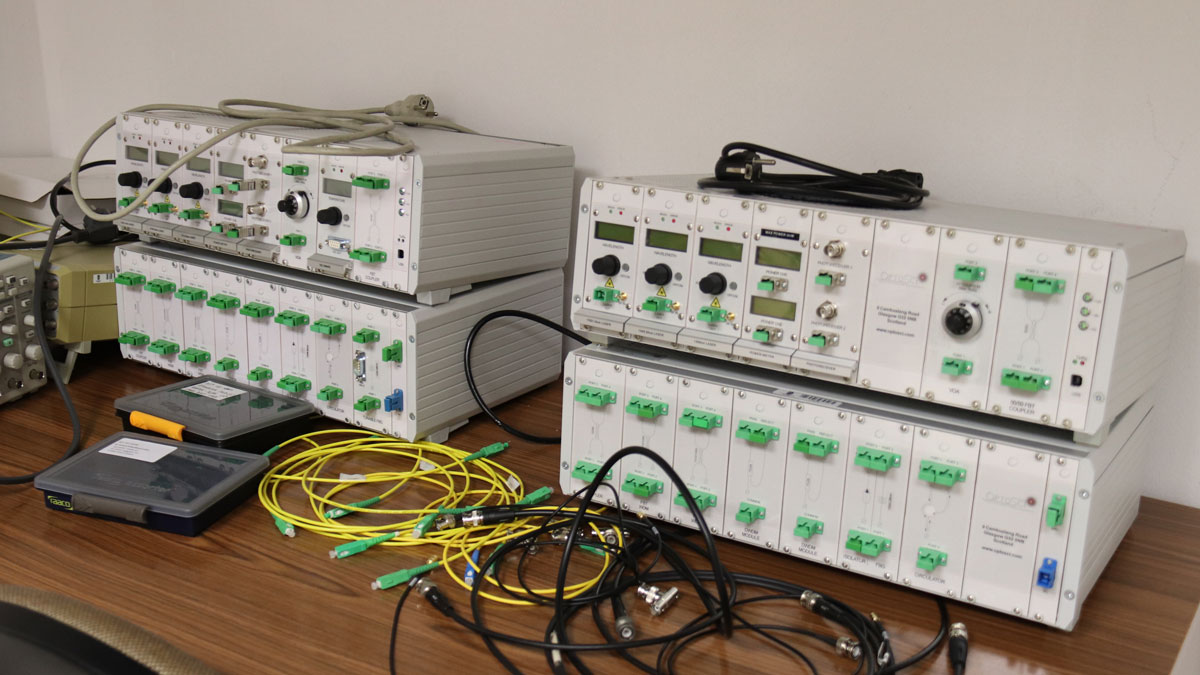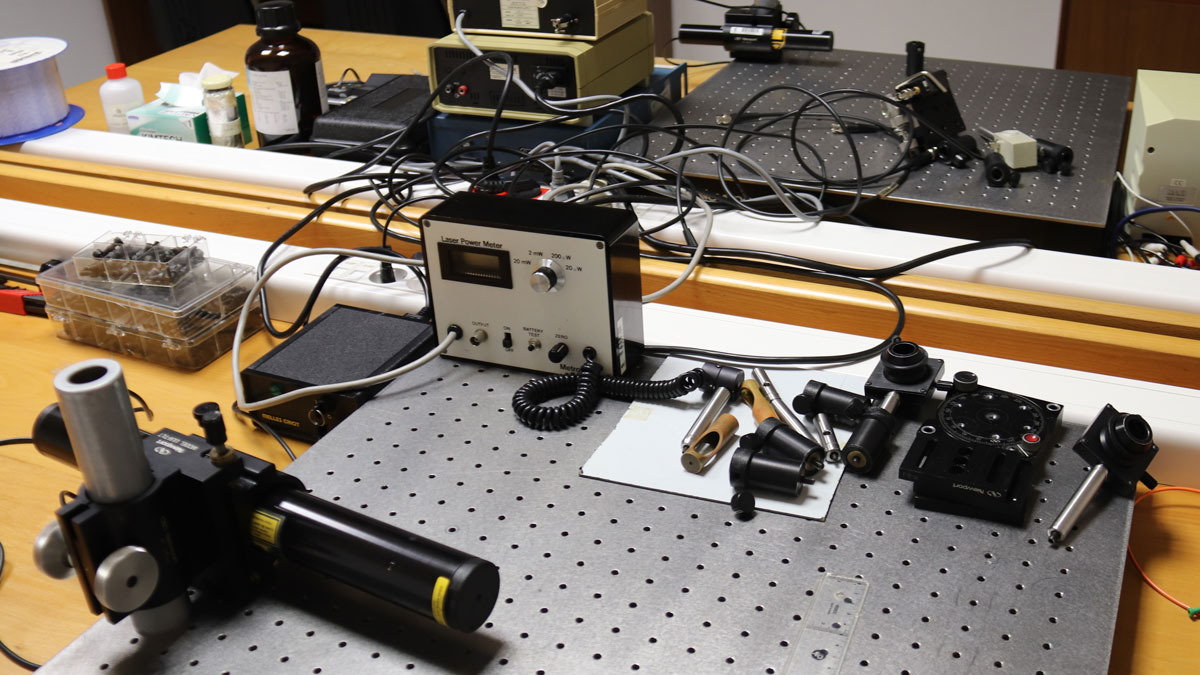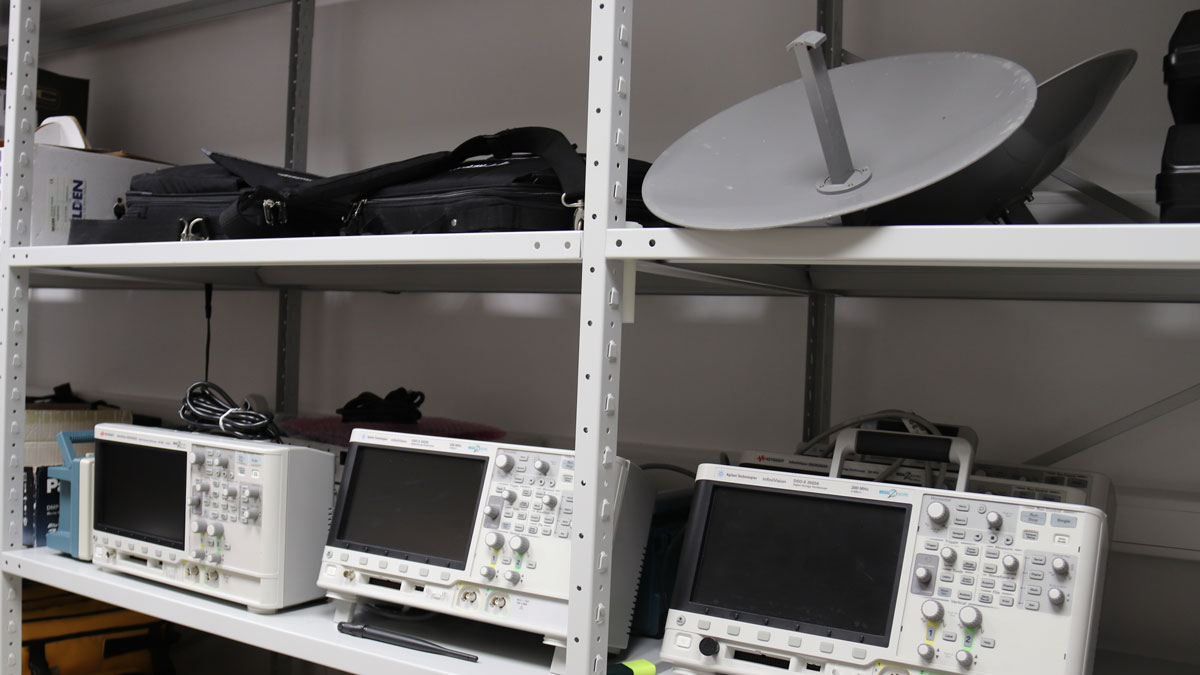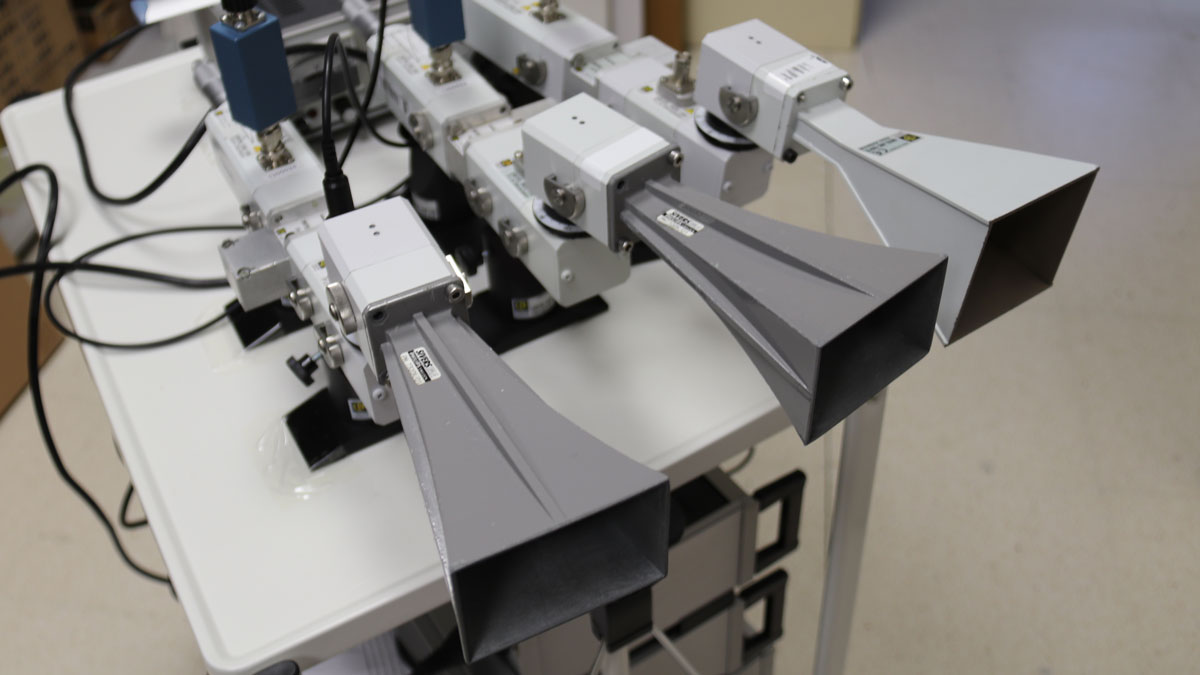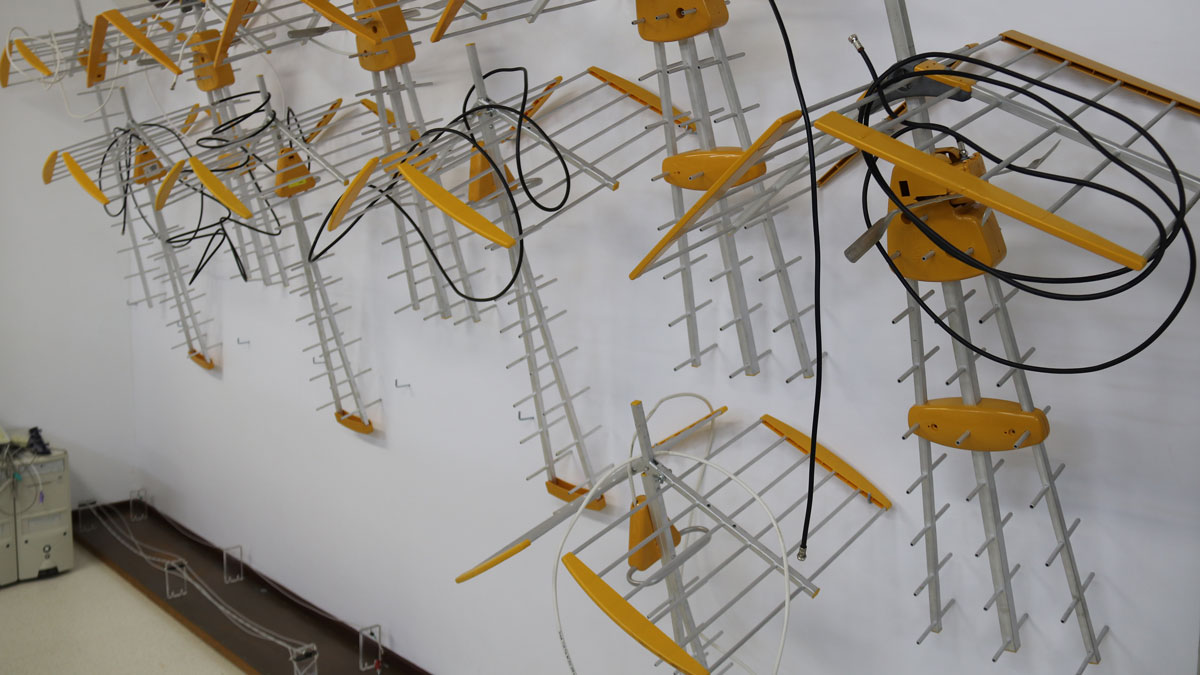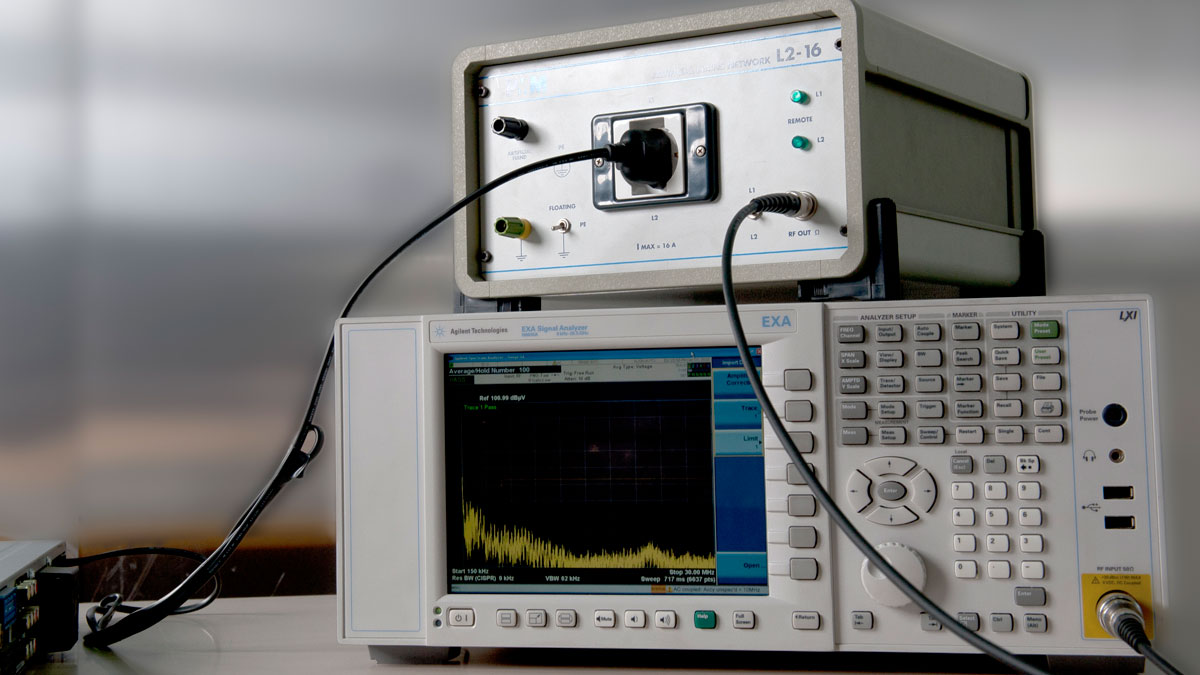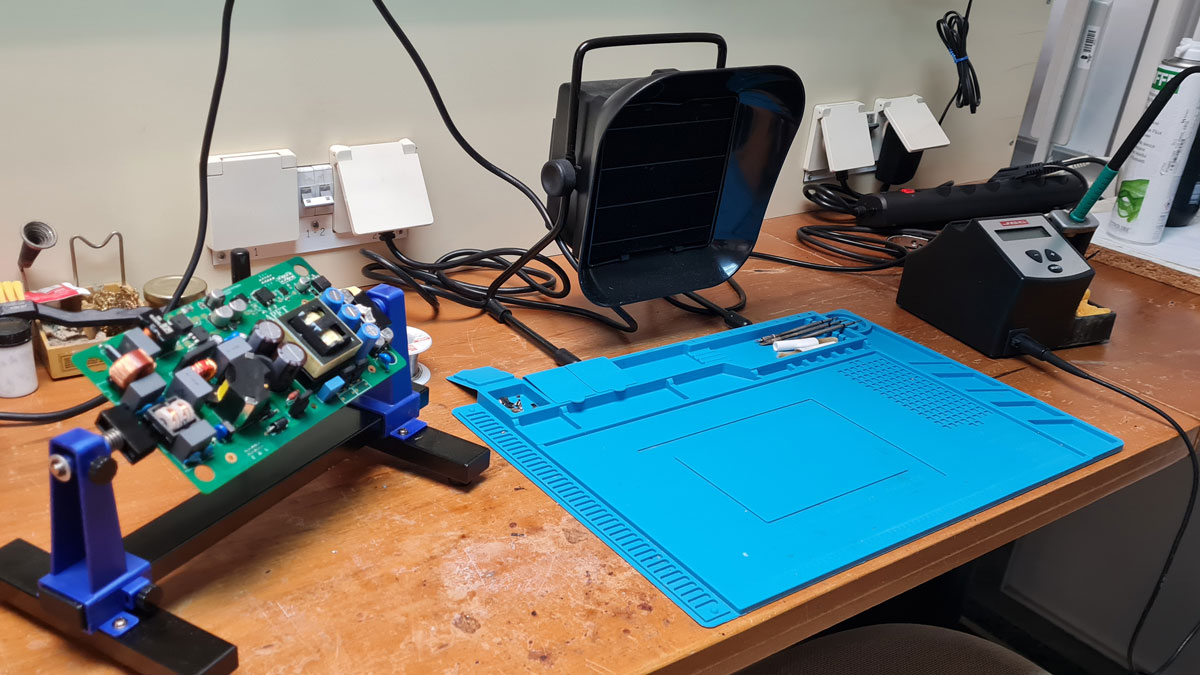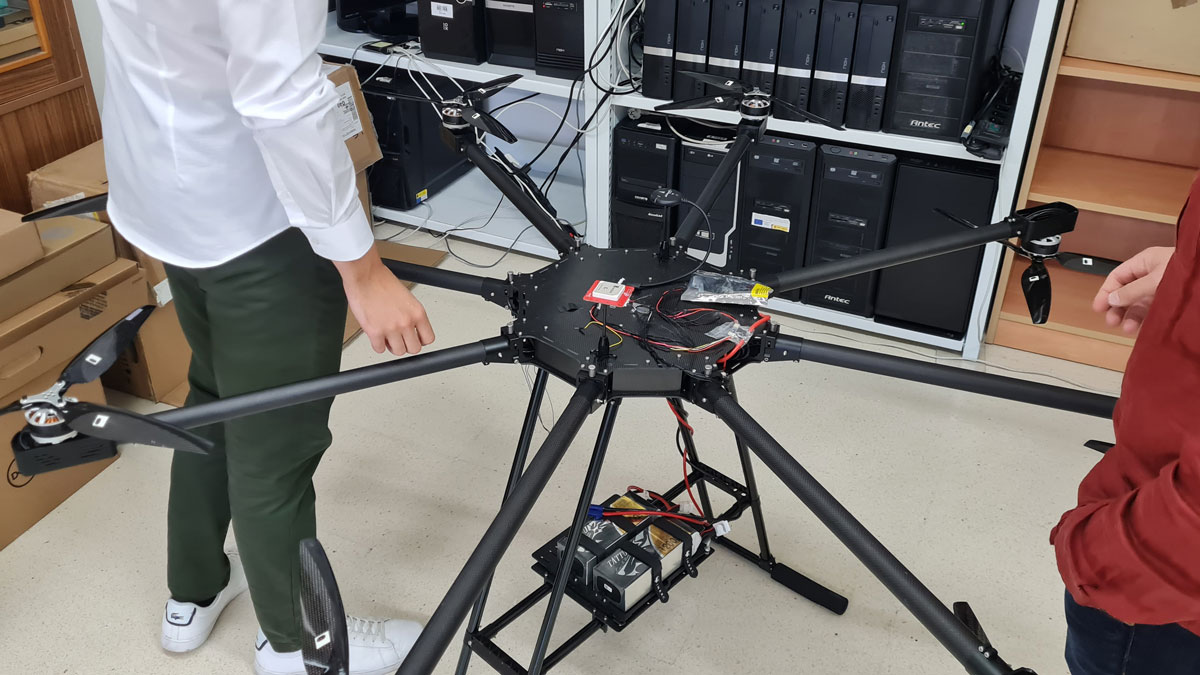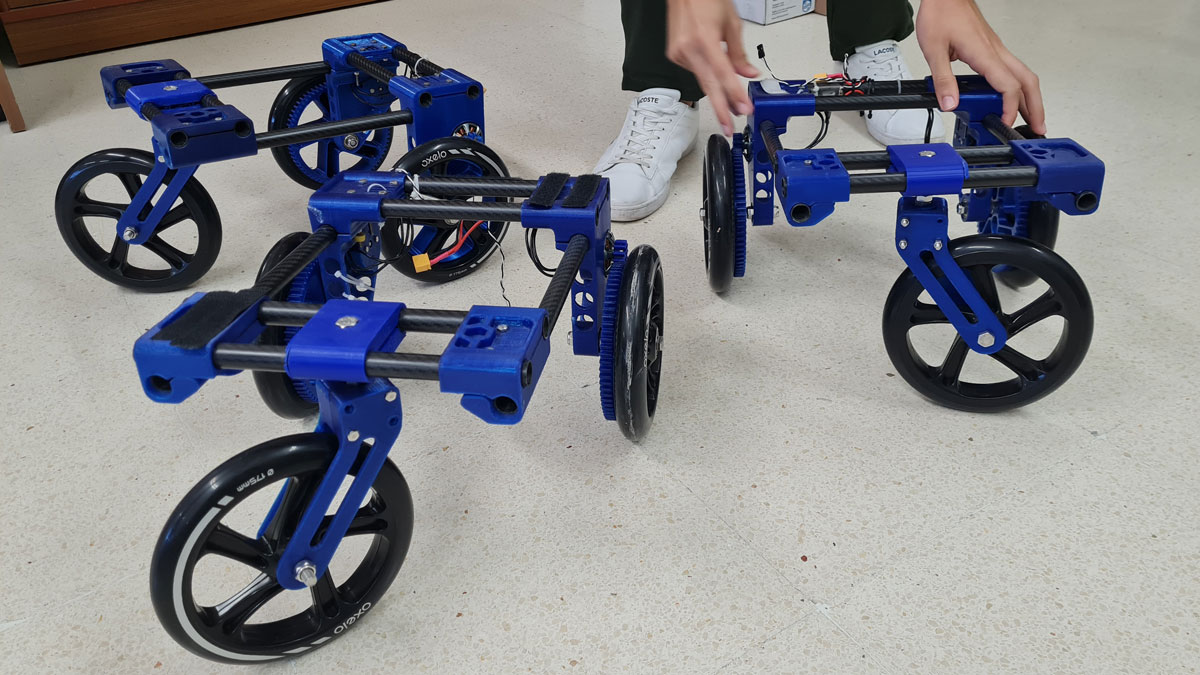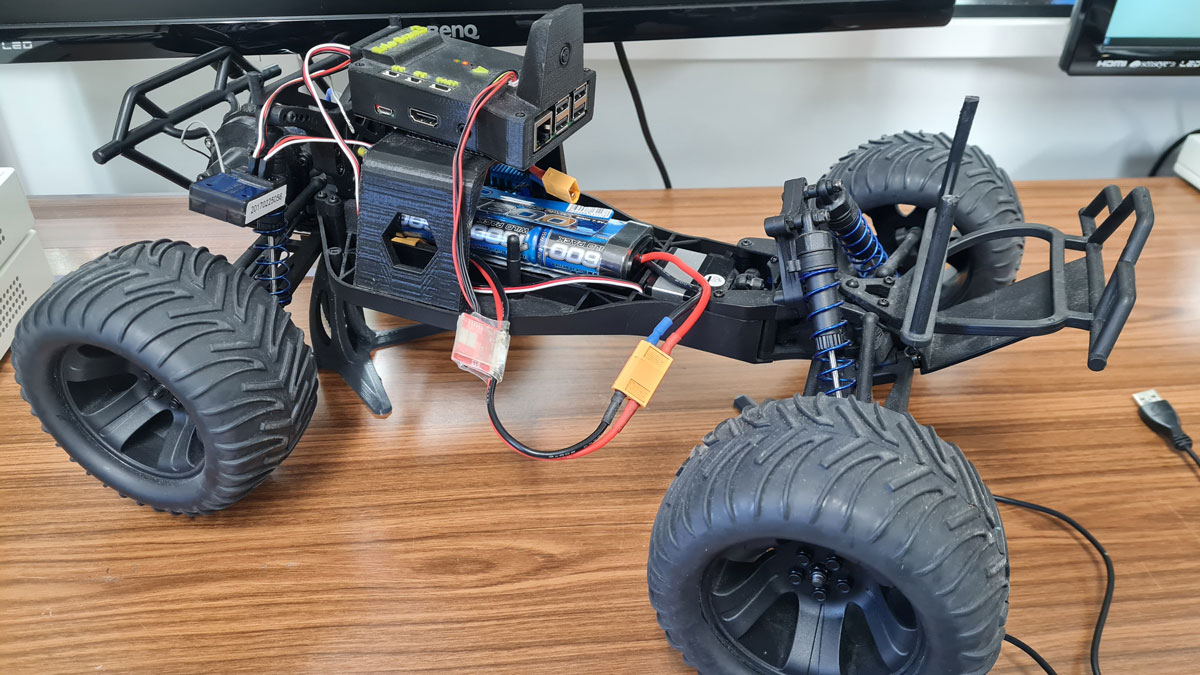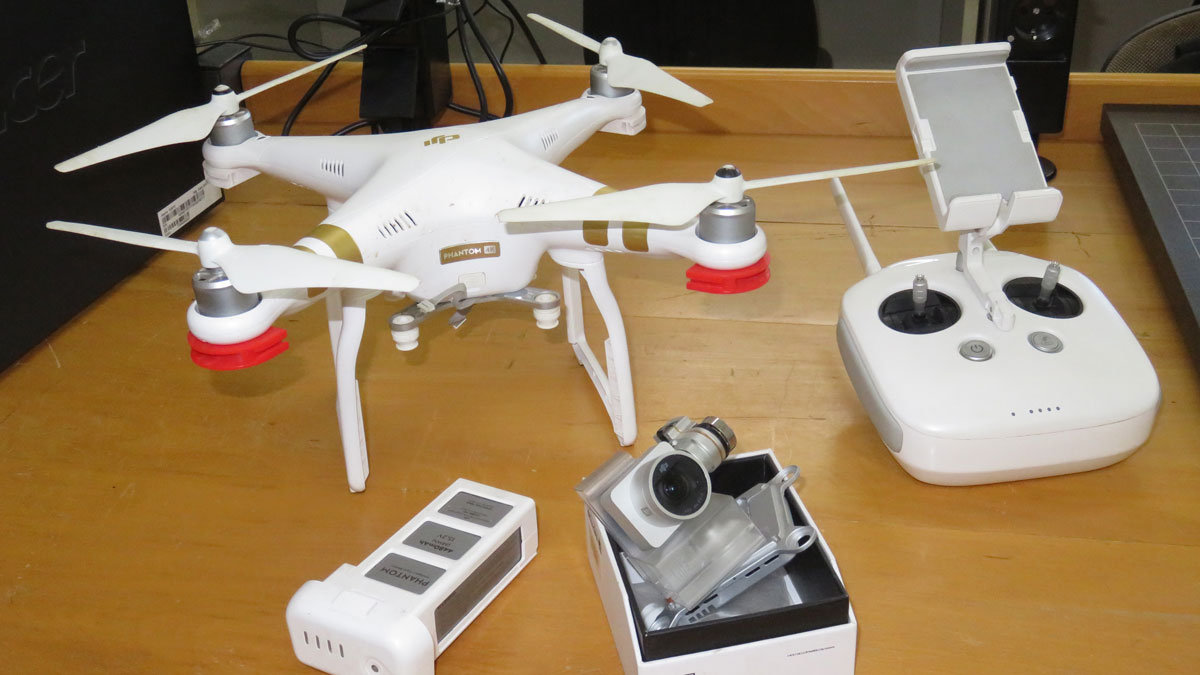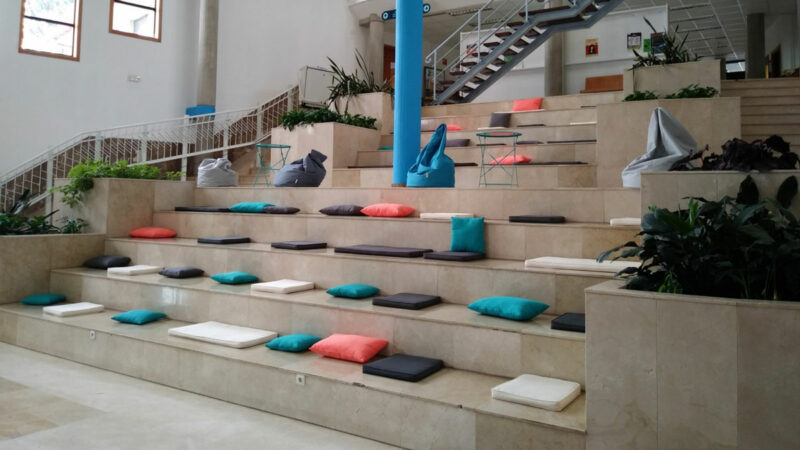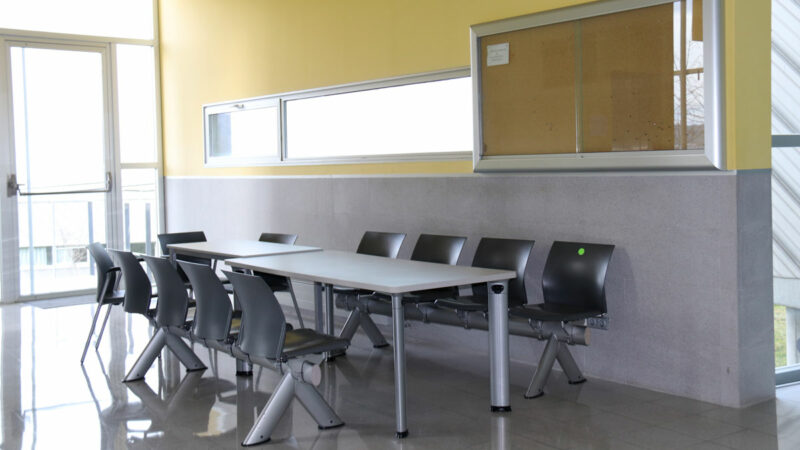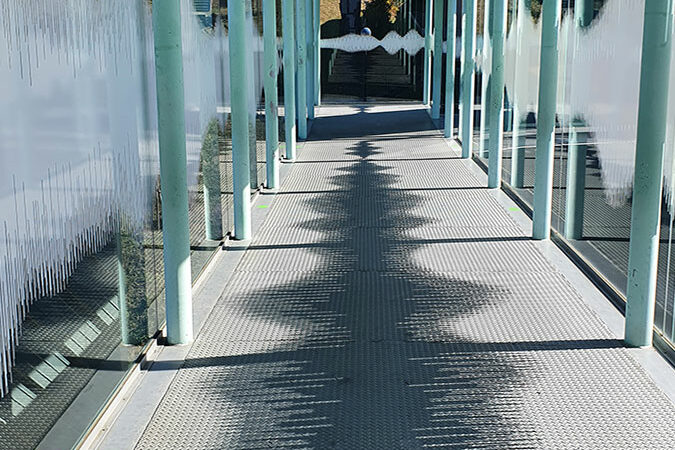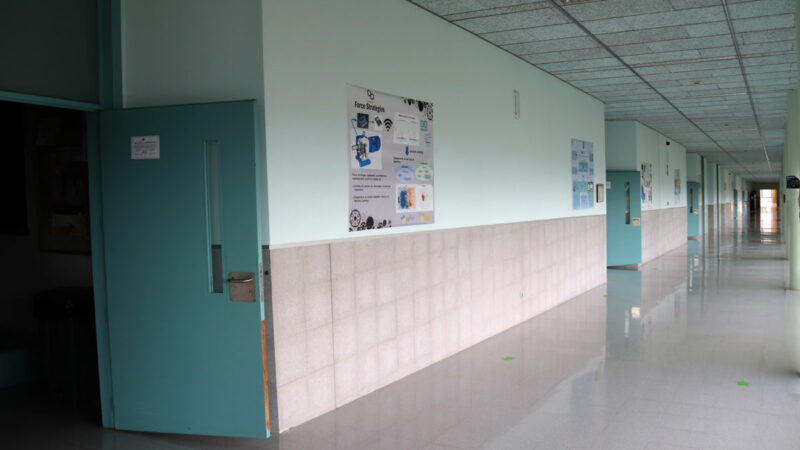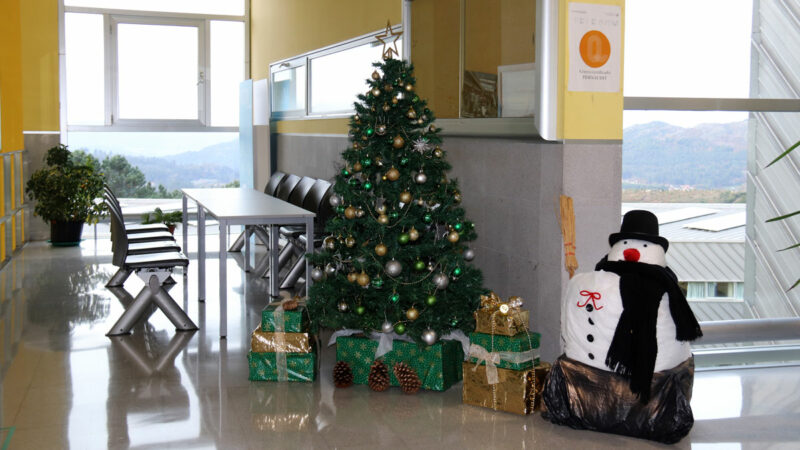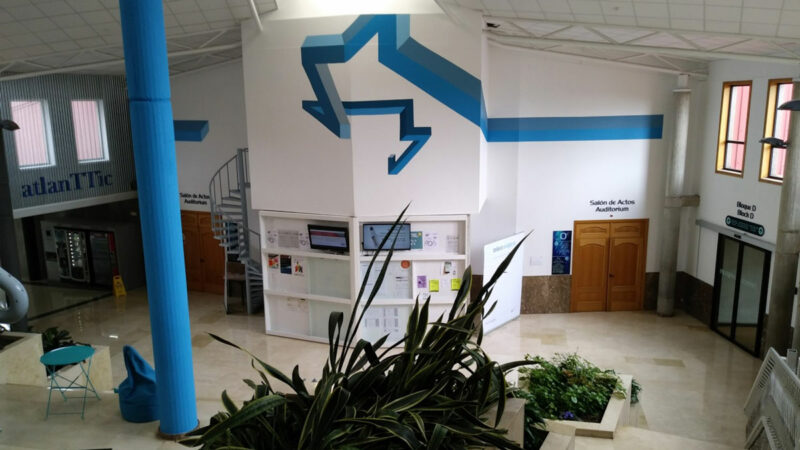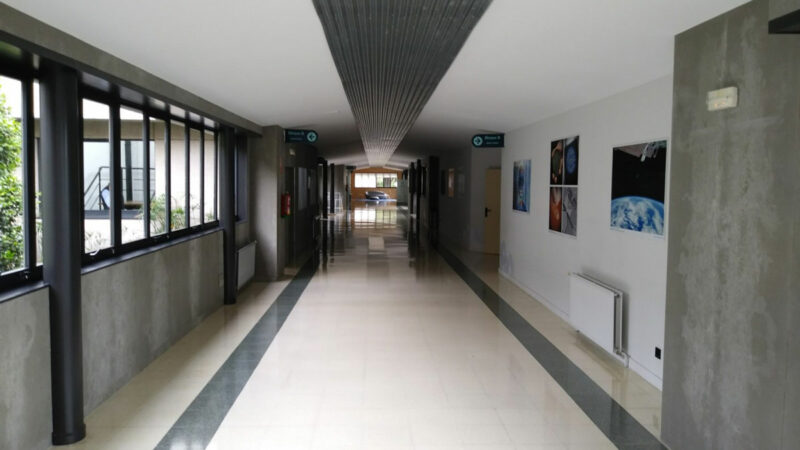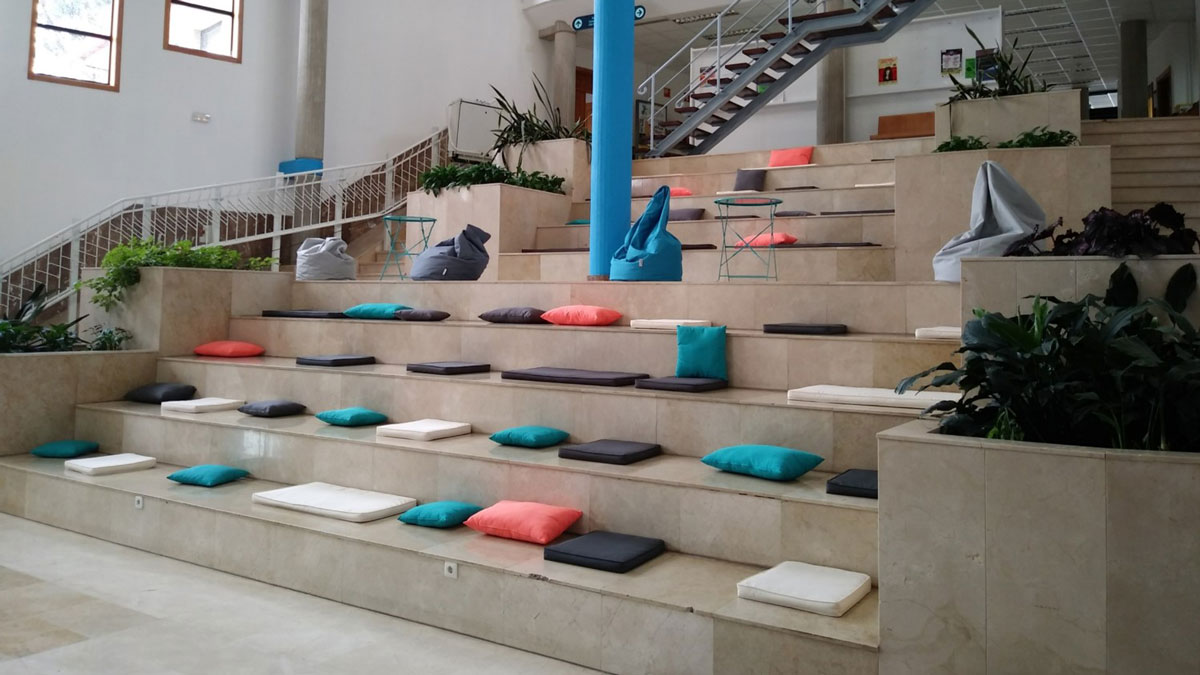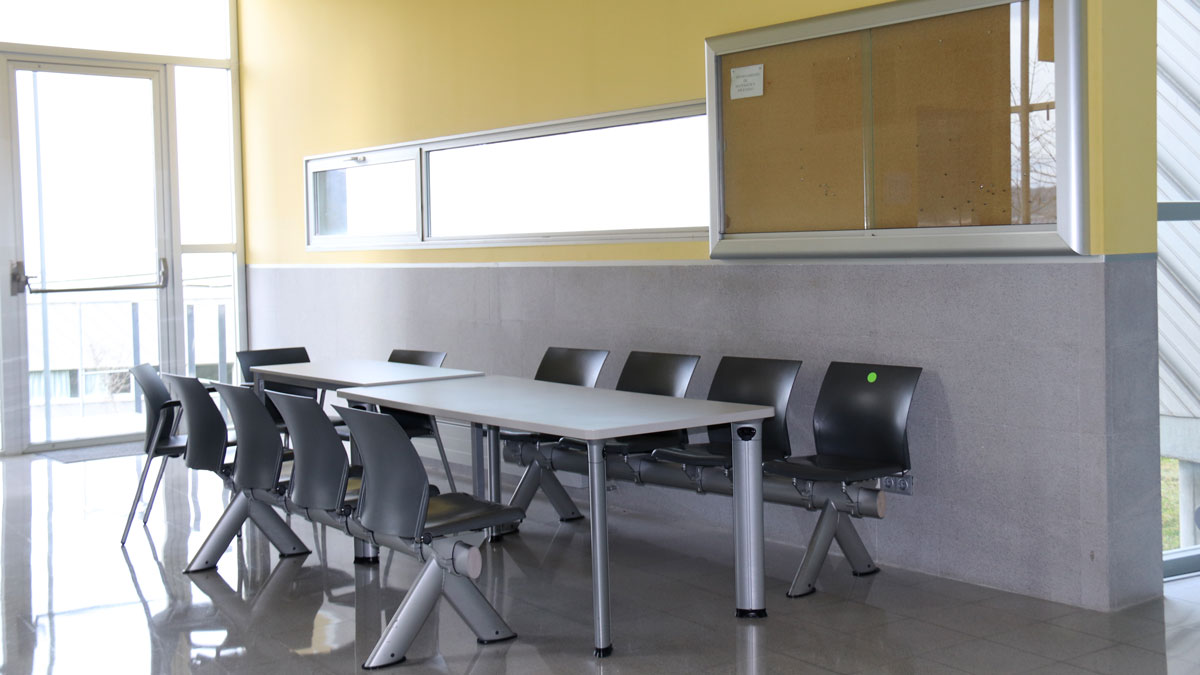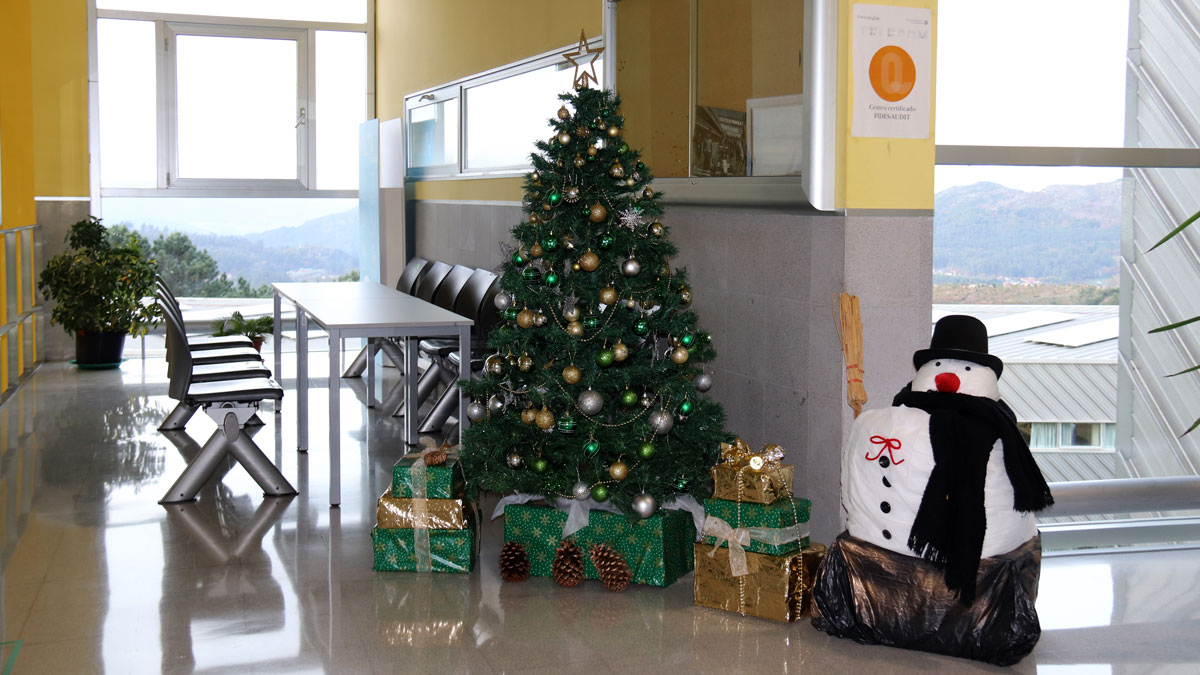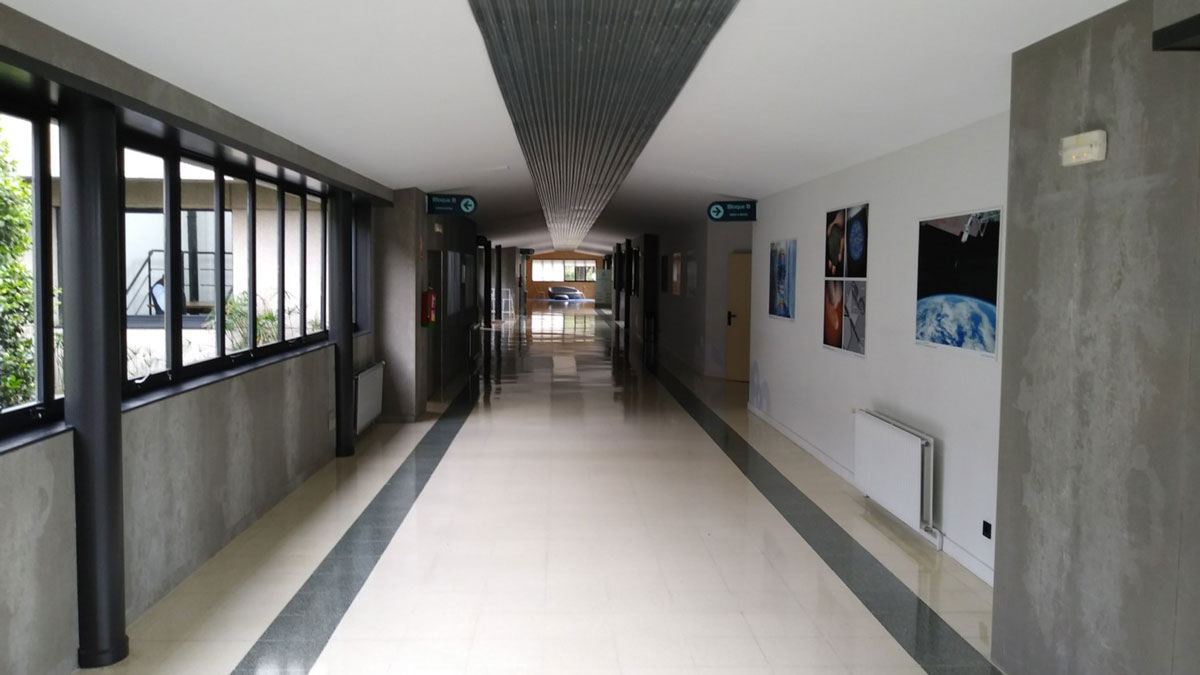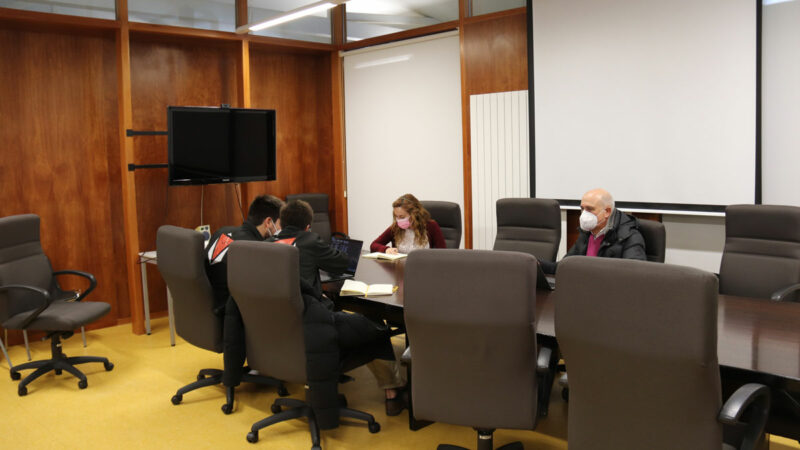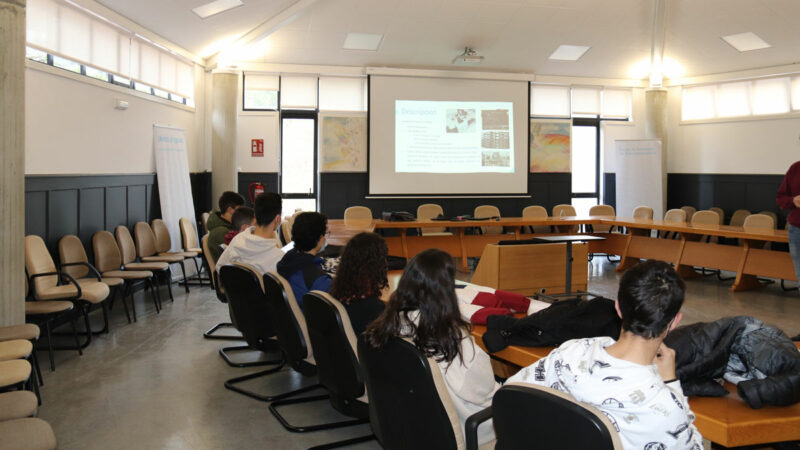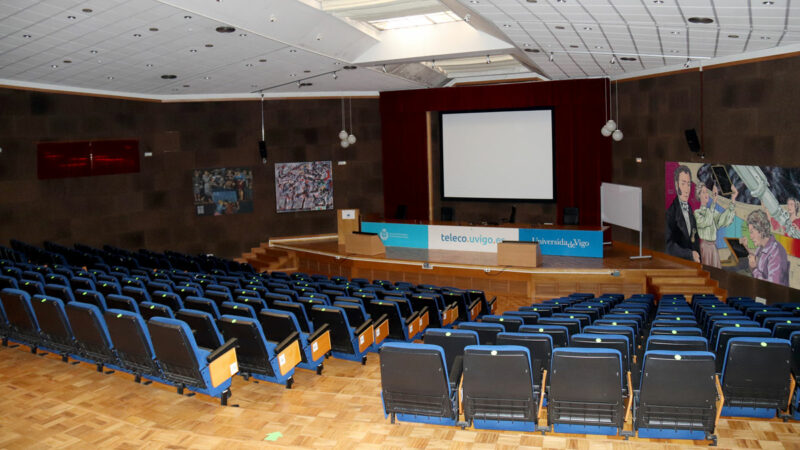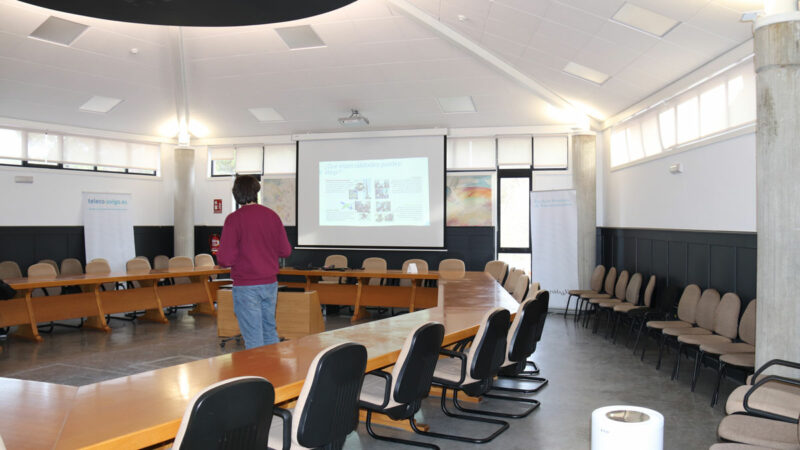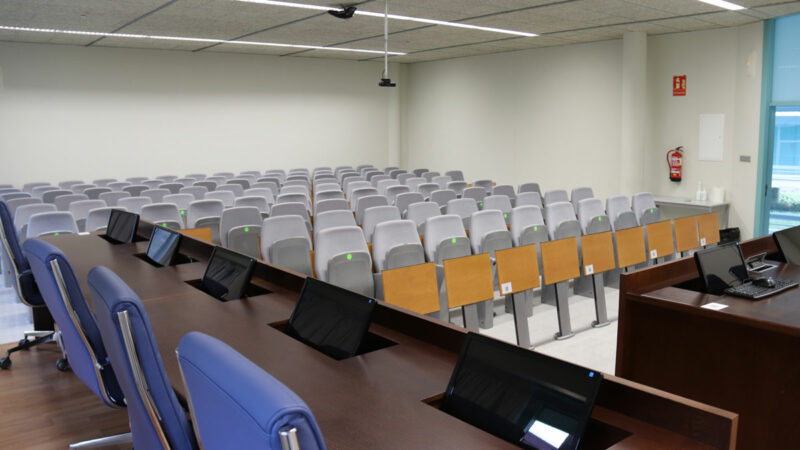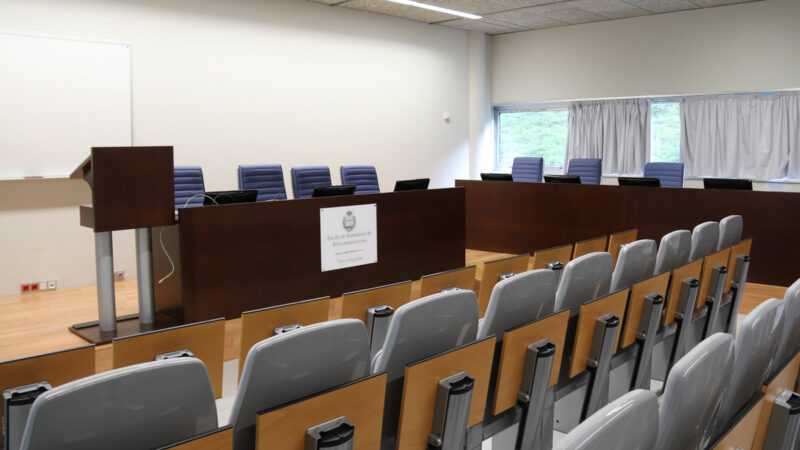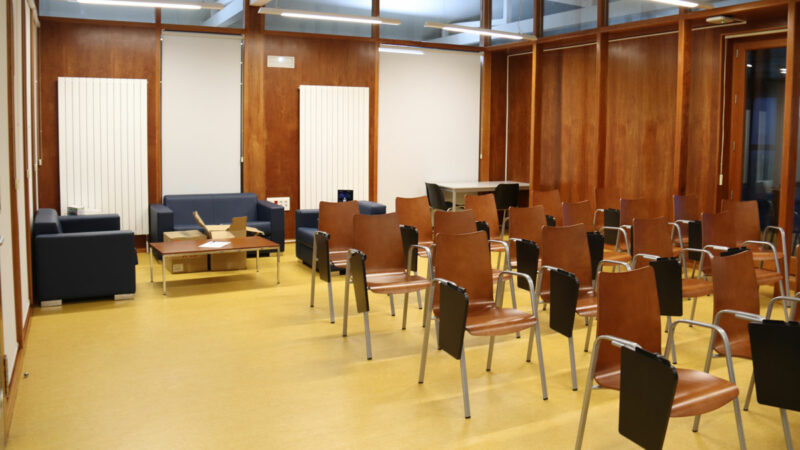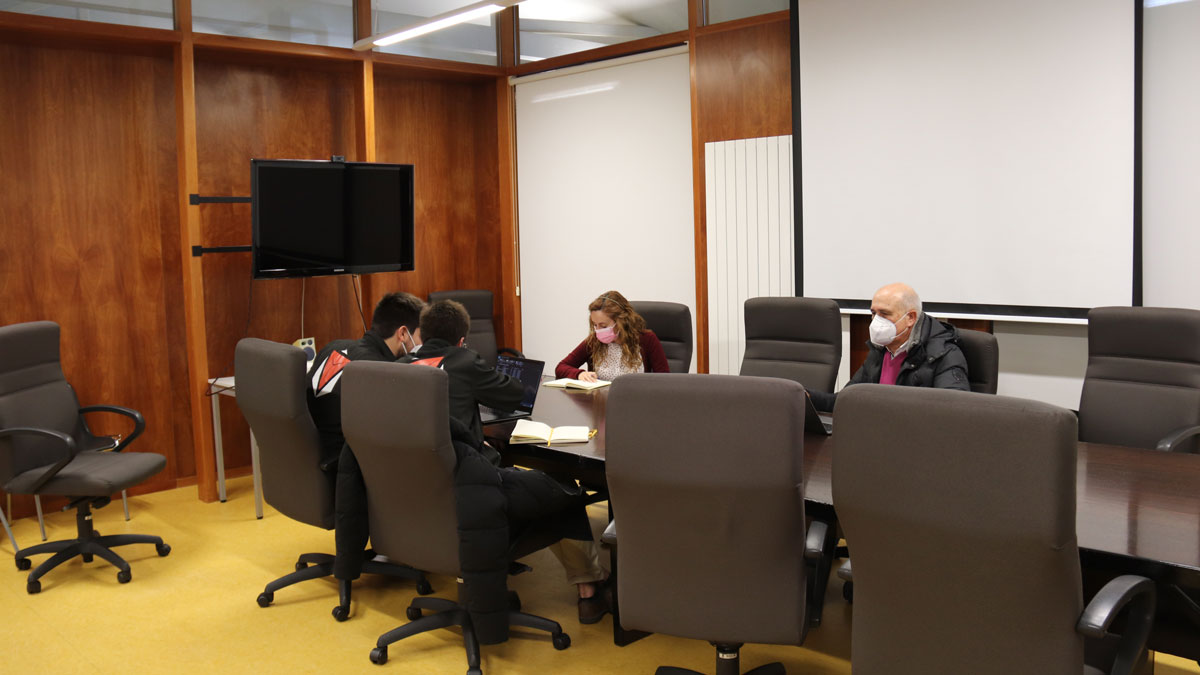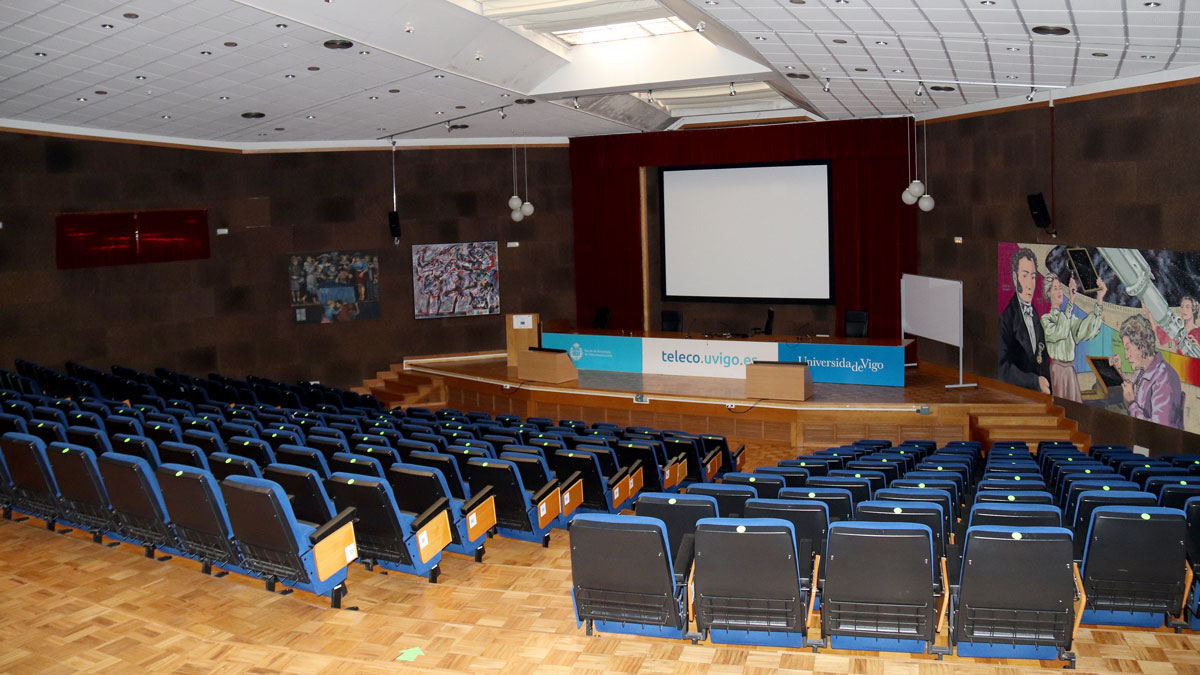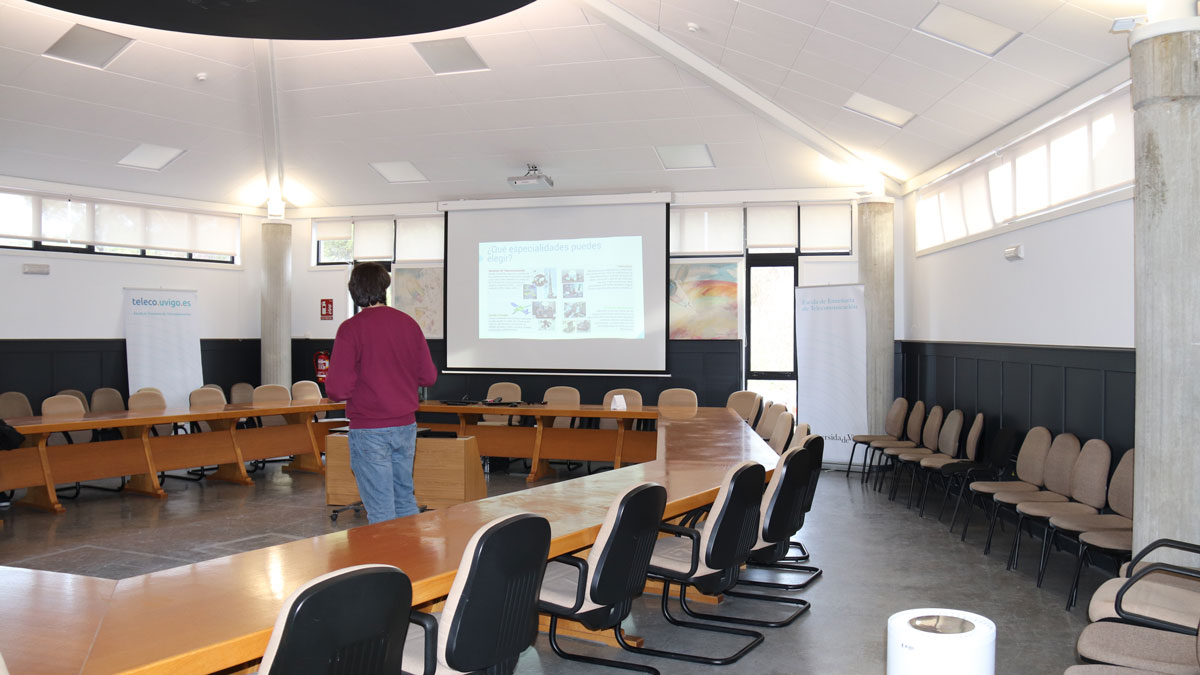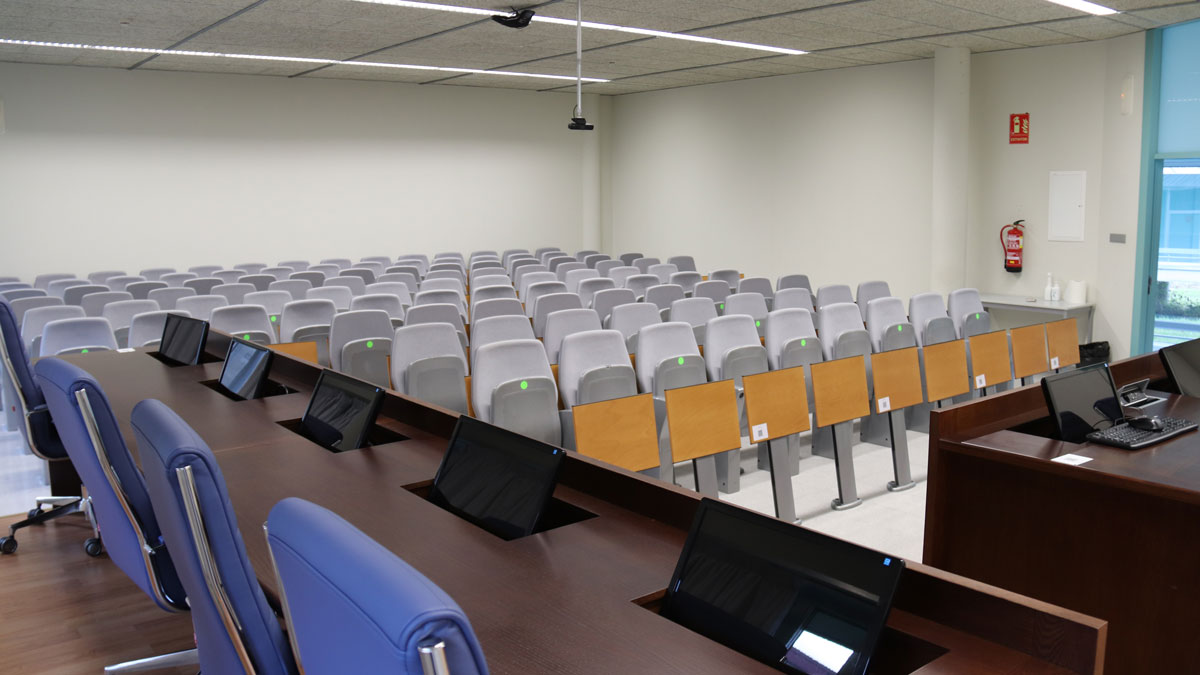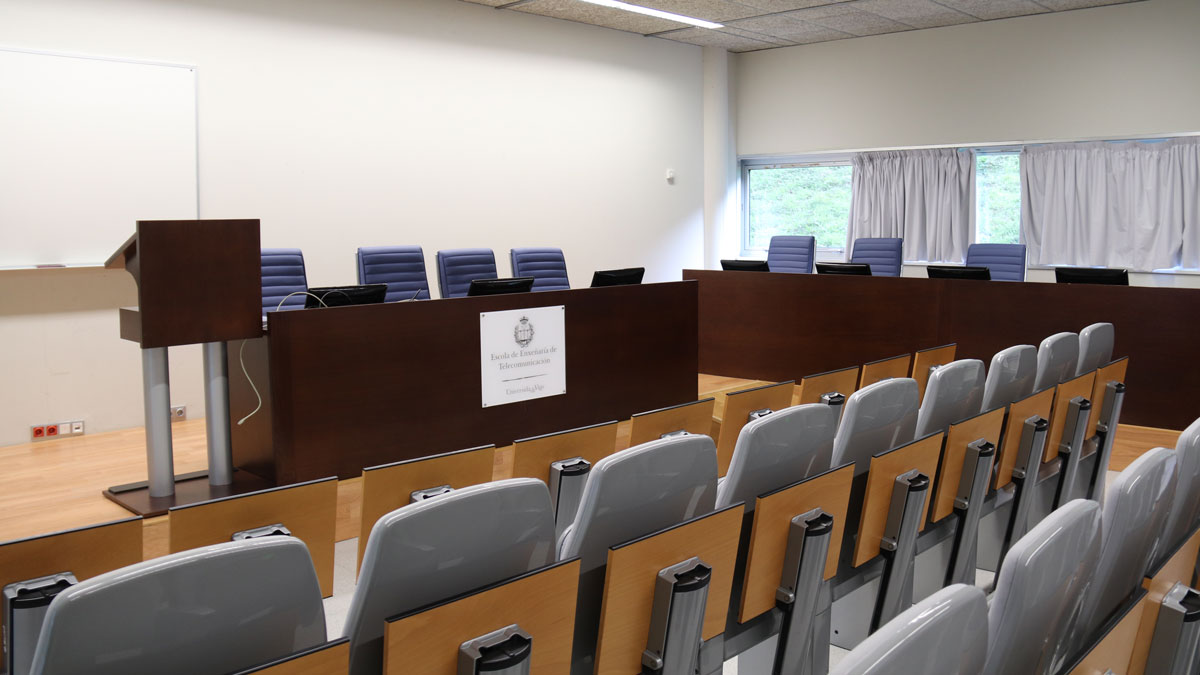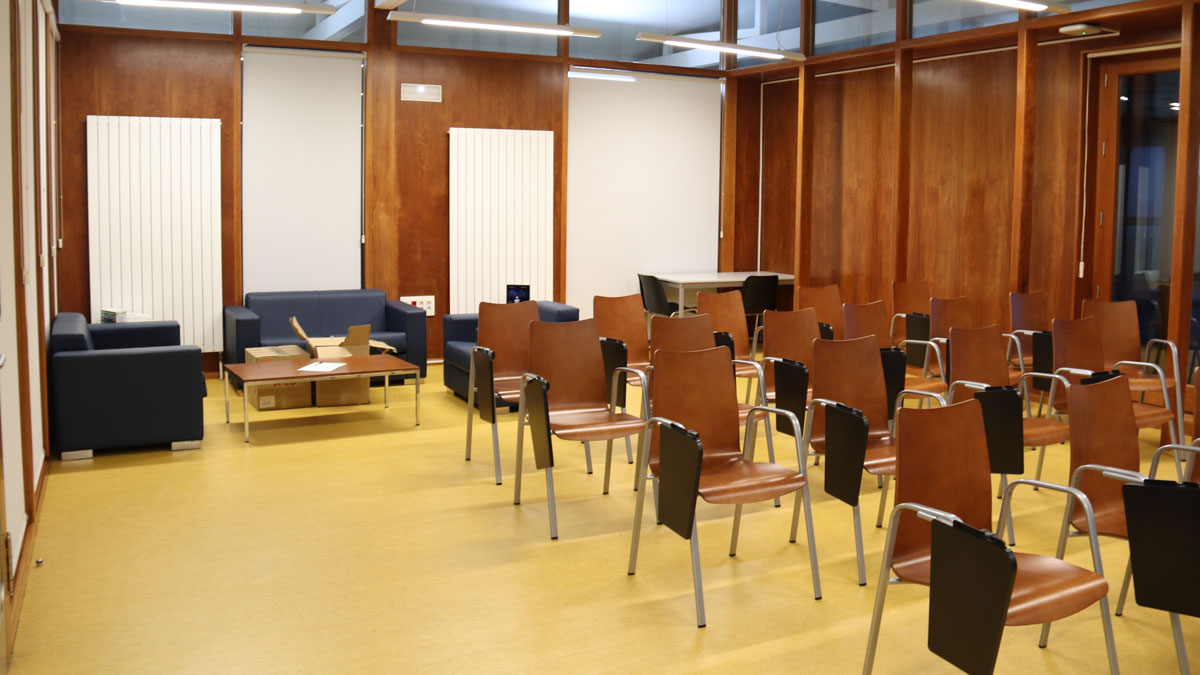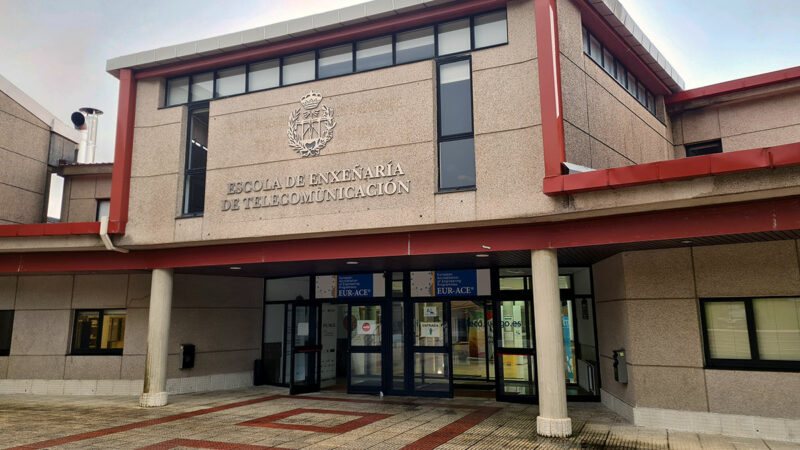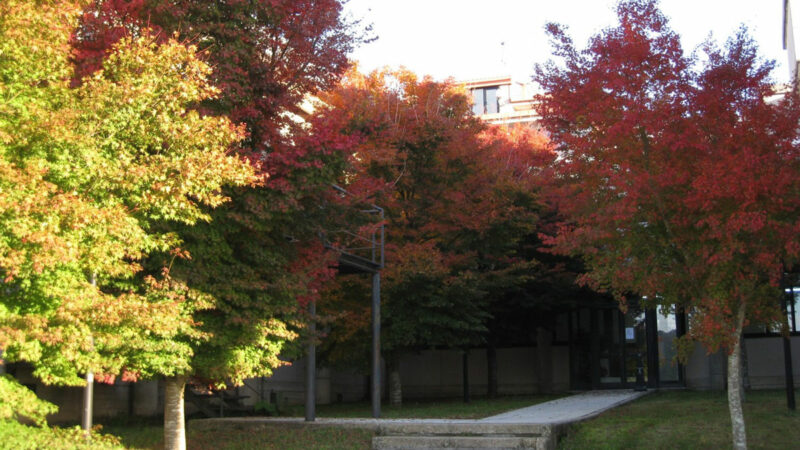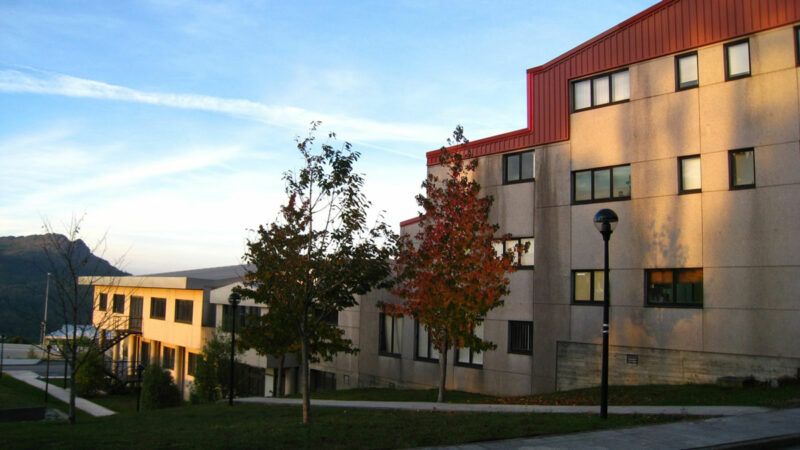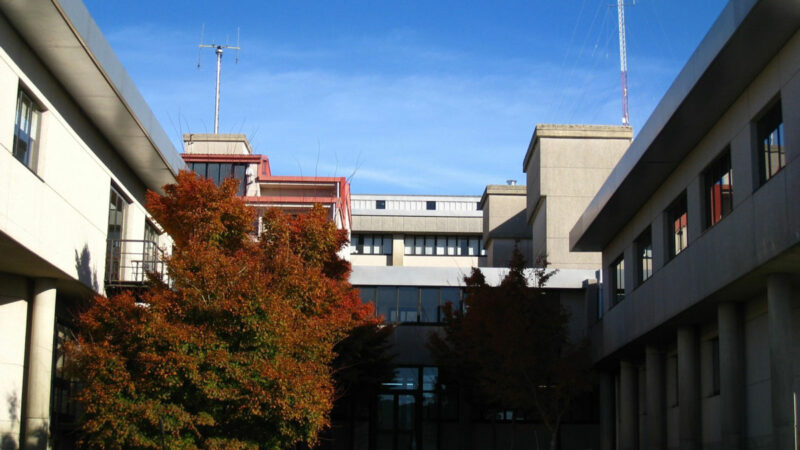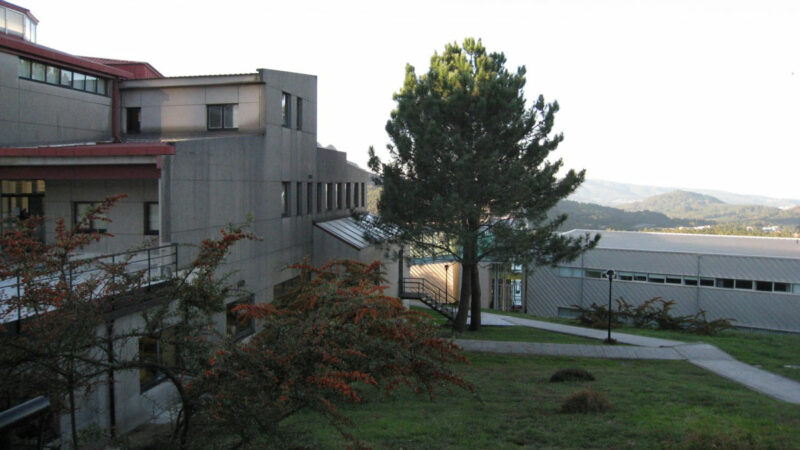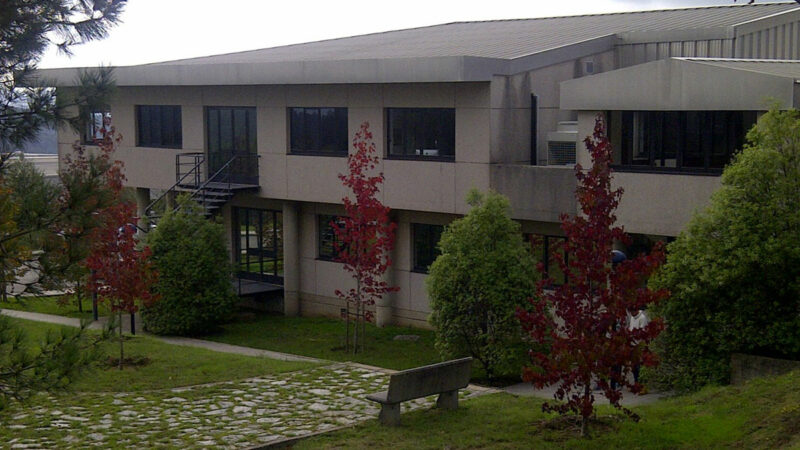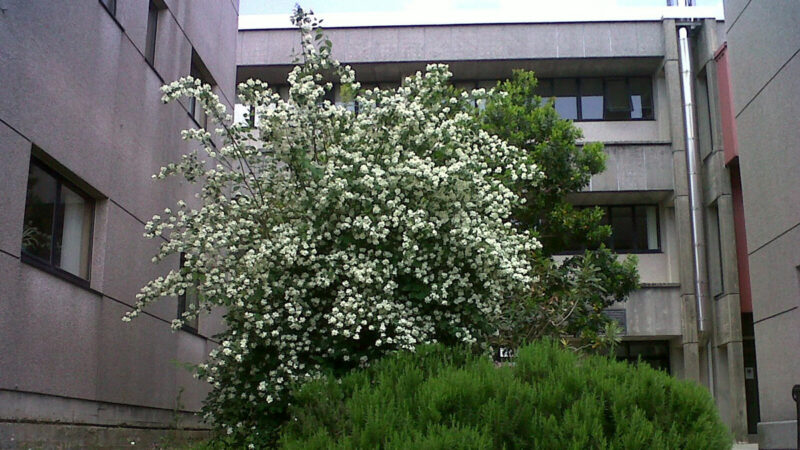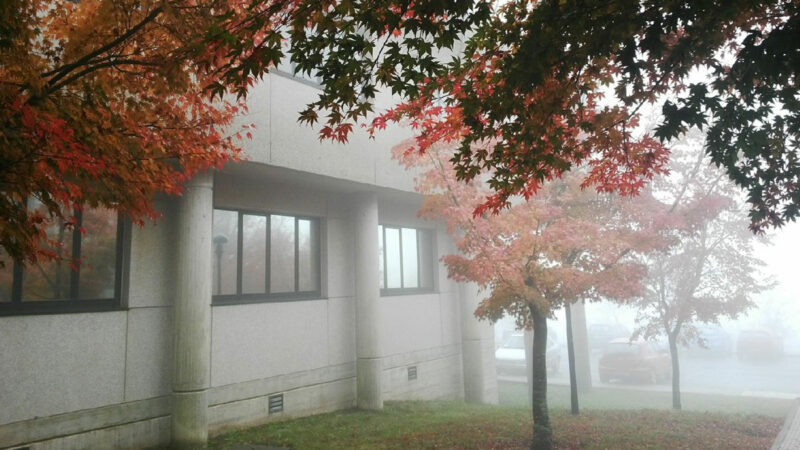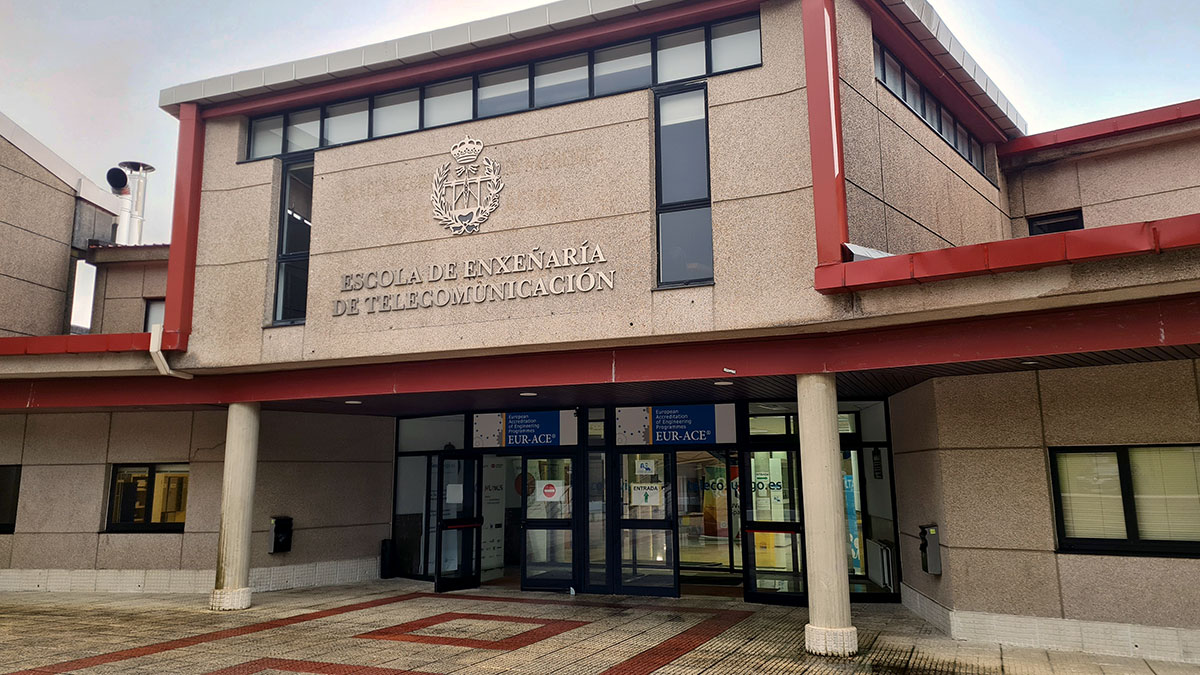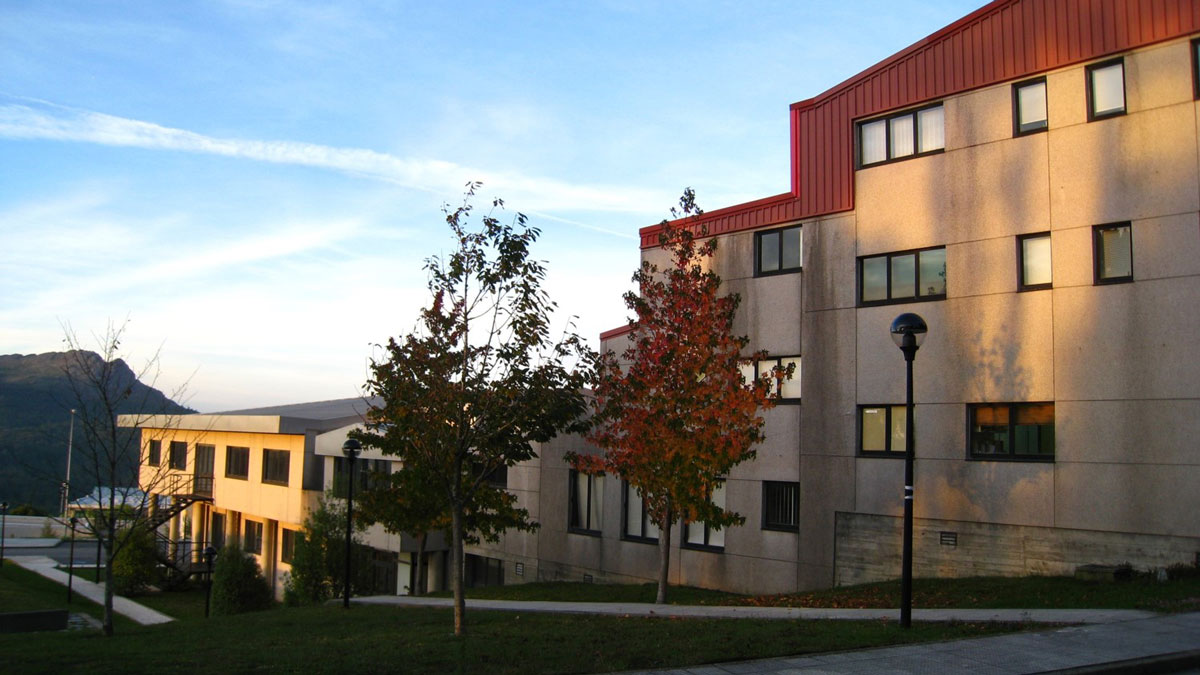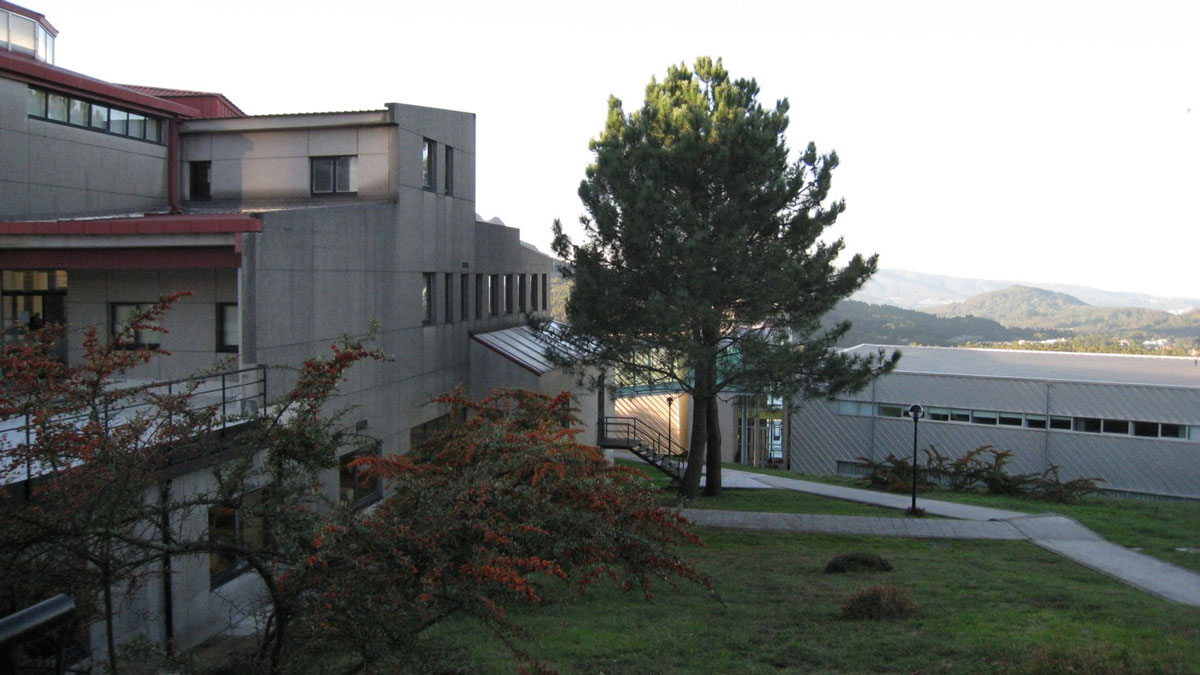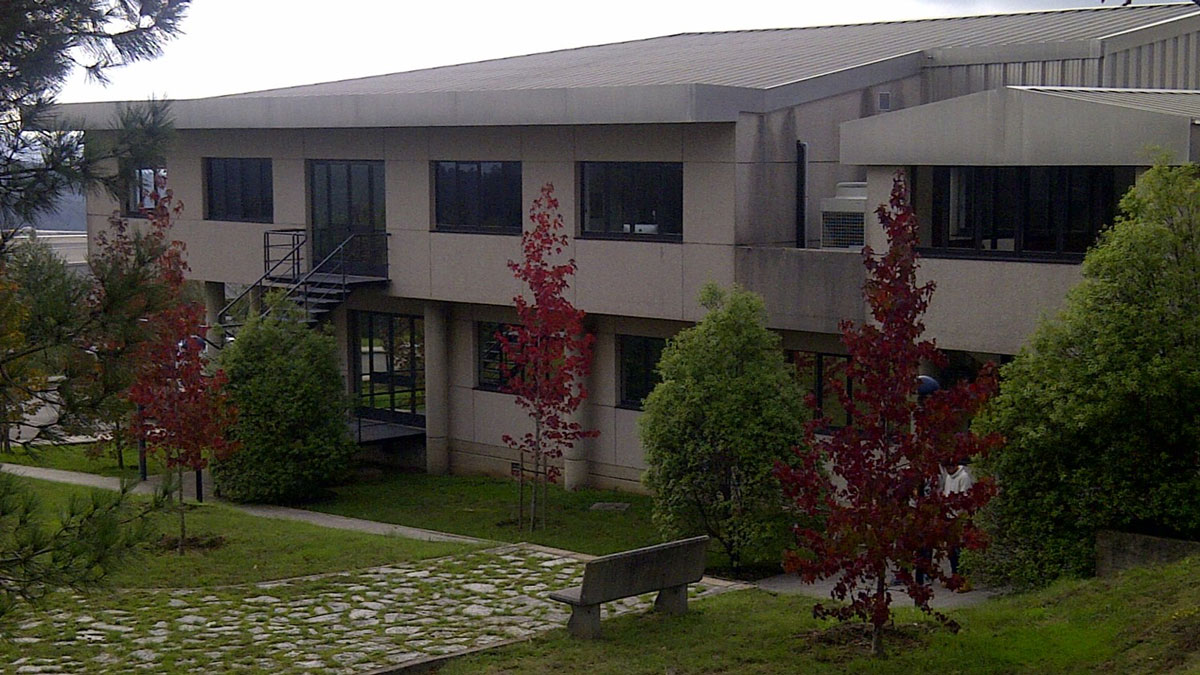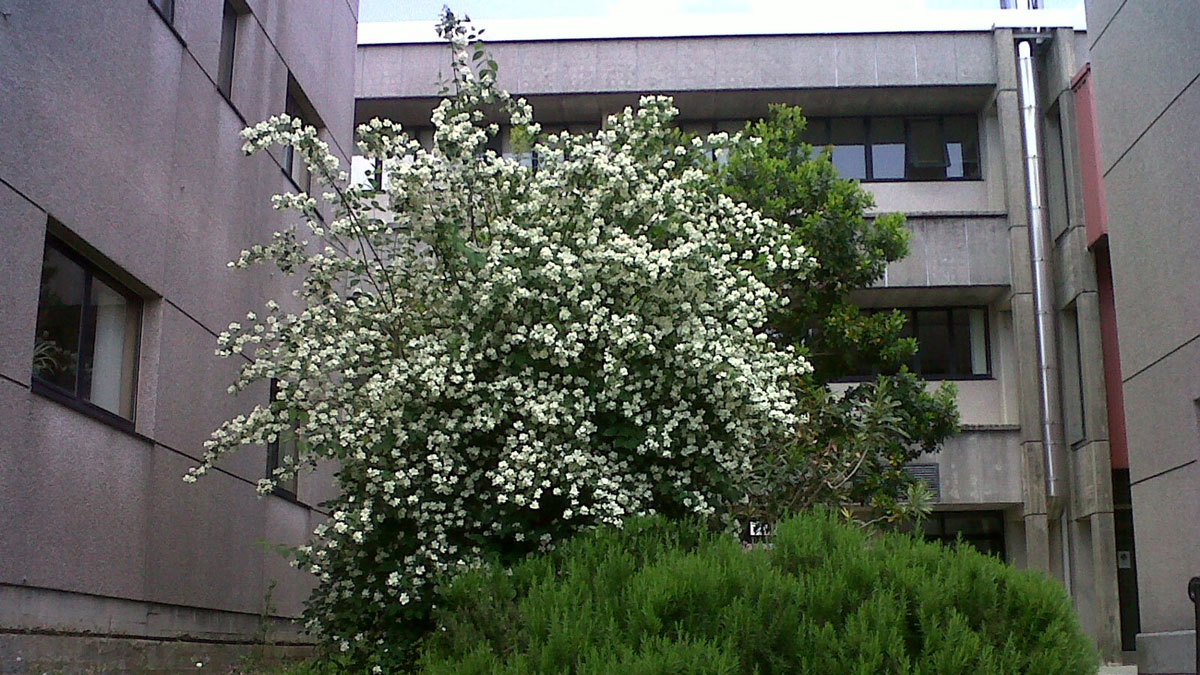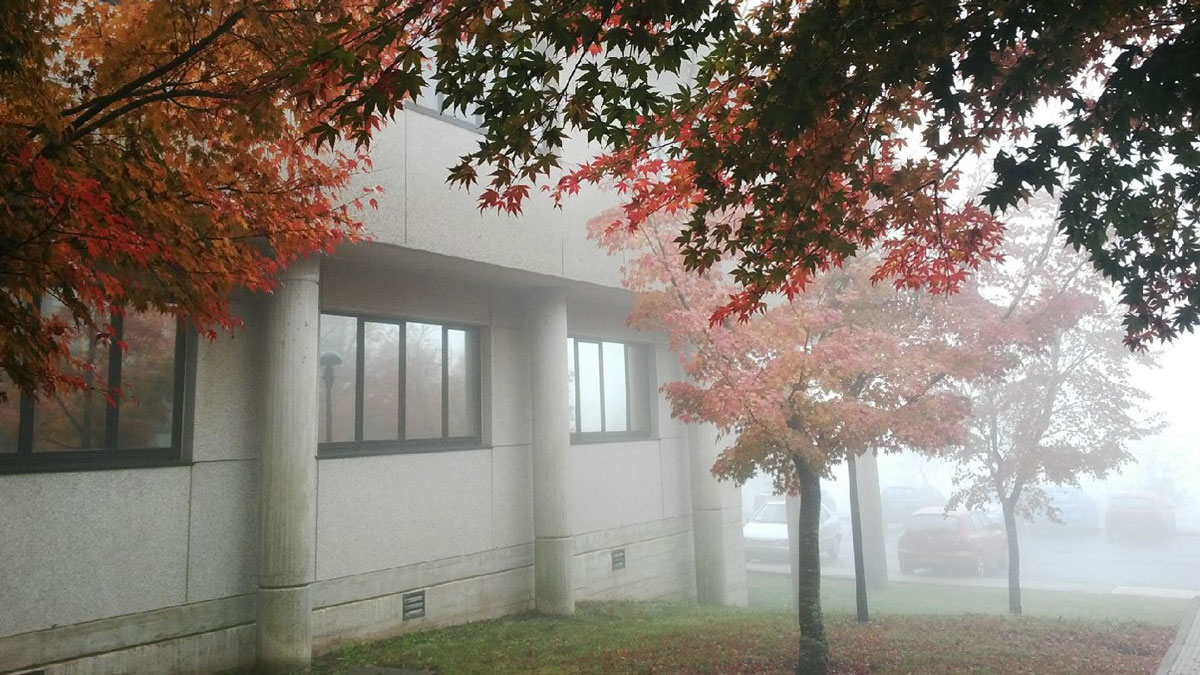At the EET, we offer applied and practical teaching. We have a wide range of laboratory facilities and specific equipment available for students to develop their academic projects.
On this site, you can see a sample of our teaching spaces organised in the following categories: computer laboratories, instrumental laboratories, singular laboratories, equipment for practical work, classrooms and library.
These rooms, together with the classrooms, are located in the two adjacent and connected buildings that make up the EET. On this page, you can see both buildings, as well as meeting rooms and other common spaces and passageways.
Galleries of the School spaces and resources
Instrumental laboratories
In the EET we have nine specific laboratories for analogue electronics, digital electronics, projects related to cybersecurity, signal propagation, microelectronic design and circuit analysis. In these facilities, students have at their disposal state-of-the-art equipment that can be used individually or in small groups of two people at most, to guarantee a good practical training and to facilitate experimentation.
Computer laboratories
We have 14 computer laboratories fully equipped and prepared to develop computing, communications and internet services provision projects. In the 2020/21 academic year, the BYOD (Bring Your Own Device) pilot project was launched to facilitate students’ work by using their own computers in combination with those offered at the School.
Singular laboratories
We also have three anechoic rooms to study the propagation and reflection of acoustic and electromagnetic waves. An anechoic chamber is specially designed to absorb the reflections produced by acoustic waves or electromagnetic waves on all its surfaces (walls, floor and ceiling). In addition, the rooms must be isolated from the outside to avoid interference from any external sources.
In these rooms, we have a controlled environment conducive to analyse and calibrate sound sources and antennas by measuring their power or directivity, for example.
For the study of acoustic signals, we have a semi-anechoic room. All the walls, except the floor, are equipped with Metadyne technology: unbreakable, durable and fireproof wedges with high absorption that guarantee free field conditions from 100 Hz to 20 kHz. It is a large-volume room with a dedicated space for high quality 5.1 surround control and playback. It was designed by acoustic consultant Philip Newell following the “no environment” paradigm based on high absorption in side walls, rear and ceiling.
For the case of electromagnetic wave studies, there are two large volume anechoic chambers at the EET. One of 9x9x7 meters designed to operate up to 40 Ghz with a spherical range system with which it is possible to obtain complete antenna radiation patterns, SWR characterisation and gain determination. Thanks to its design it is possible to increase the maximum working frequency and perform antenna measurements up to 50Ghz. Another one of 8.08×1.85×2.03 m for measurements at frequencies higher than 1Ghz. Finally, we also have a compact anechoic chamber of 1.67×0.65×0.65 m for measurements at frequencies higher than 21 Ghz.
Classrooms and library
We have 16 classrooms of different capacities for degree teaching, most of them located in the new building or “aulario” (lecture hall). All of them are equipped with audiovisual equipment to facilitate mixed teaching (face-to-face and online) for those courses that require it and for special circumstances, like the pandemic.
For those courses where teamwork is encouraged, oriented to the application of Design Thinking or where a less formal and more dynamic environment is required, we have a special classroom called “pensadoiro” (thingking room).
The library is equipped with nine meeting rooms that can be reserved by the students to work in teams on their projects. Of course, the library is equipped with updated bibliography for teaching and research work.
.
Laboratory equipment
To ensure that the students can manipulate and work in the laboratories with the latest equipment, we update it frequently and provide our rooms with sufficient elements so that they can work individually or in small teams (usually of two people).
Since we deal with different technologies, we have a variety of equipment: drones, autonomous ground vehicles, state-of-the-art nodes and switches, network analysers, signal generators, electronic cards and boards to develop different projects, portable antennas, oscilloscopes, etc.
School walk-through areas
We have spacious areas and meeting points at the entrance of the main building and in the corridors. These spaces are equipped with tables, chairs and sofas to favour the rest throughout the working day. Both buildings have large windows to enjoy the light and nature of our surroundings.
Meeting rooms
At the EET we have a large Assembly Hall, with capacity for 300 people, where we hold the celebrations and events of the School. Although we have a specific room with capacity for 100 people, the “Salón de Grados” or Meeting Hall, more cosy and especially oriented for teaching events. Additionally, we have other meeting spaces to facilitate teaching and research work. All rooms are equipped with audiovisual equipment to allow hybrid meetings and facilitate interaction between the public, on-site and remote people.
EET buildings
The School of Telecommunication Engineering consists of two buildings, adjacent and connected, in which the degrees we offer are taught. The older building is where we have most of the teaching laboratories, meeting rooms, faculty offices and research spaces. The newer building, also known as the lecture hall, can be accessed by an elevated walkway. Most of the teaching rooms, some instrument laboratories and the anechoic chambers are located in this building. Both buildings are surrounded by nature, well communicated and with large parking areas.

